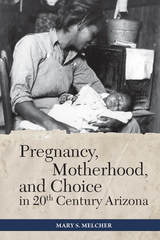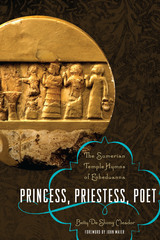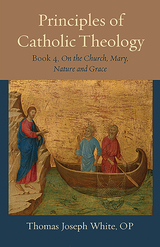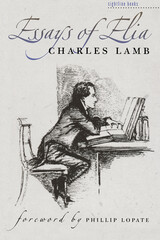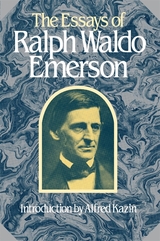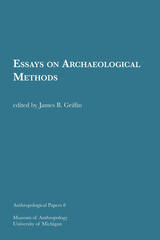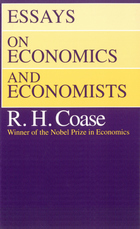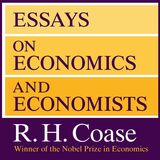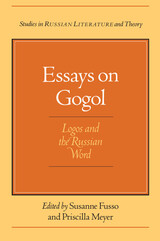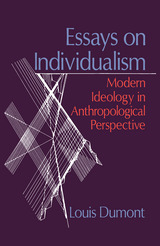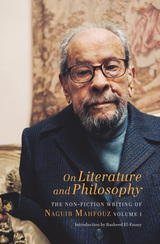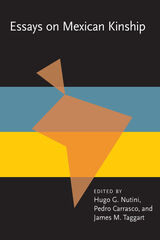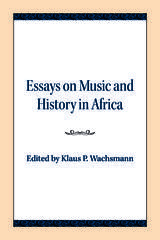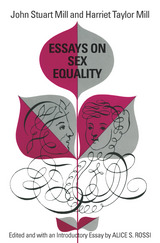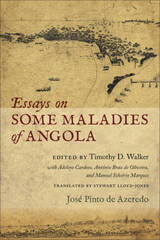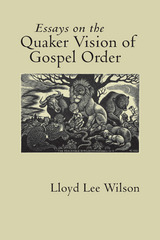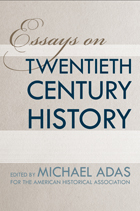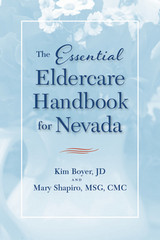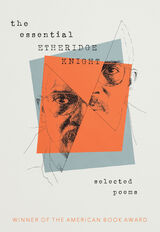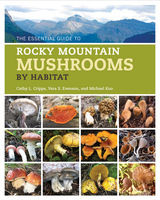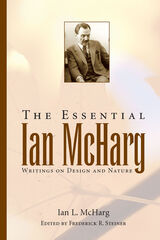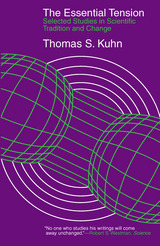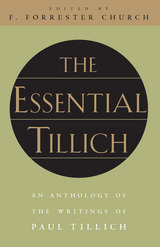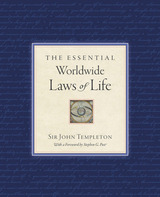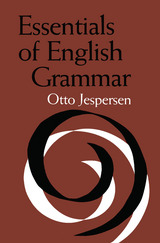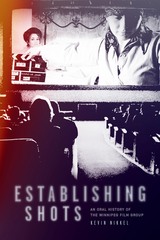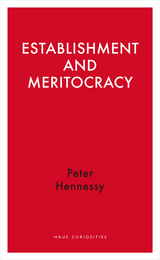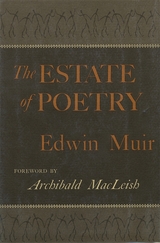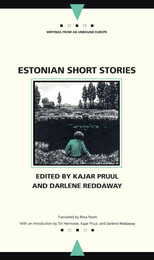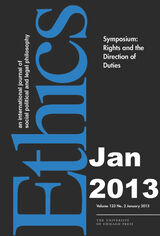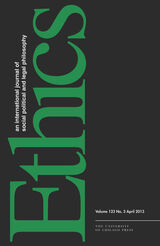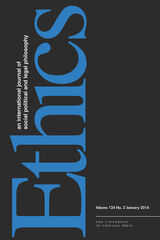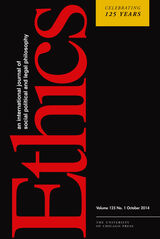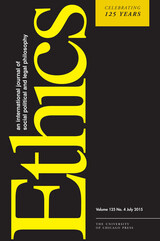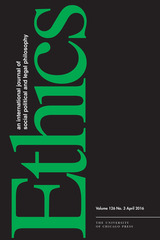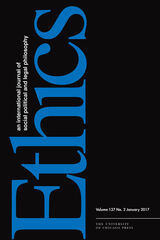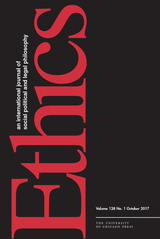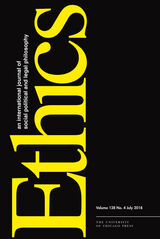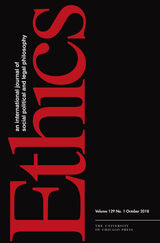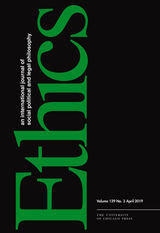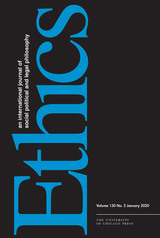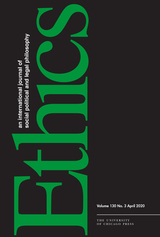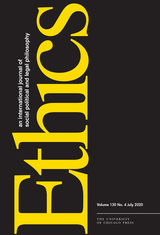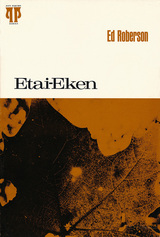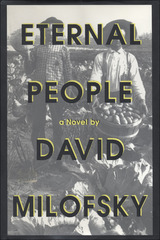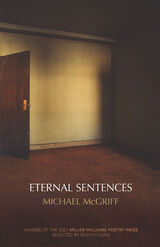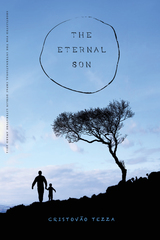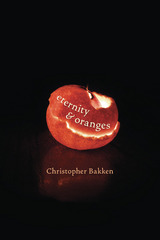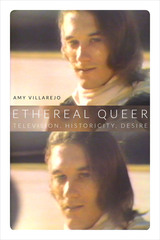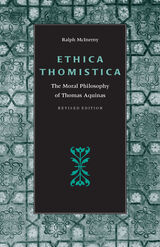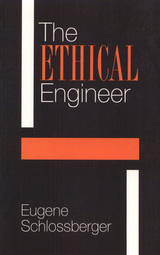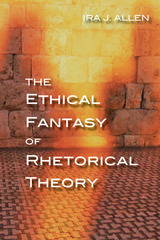Essays of Elia
Charles Lamb
University of Iowa Press, 2003 Charles Lamb, one of the most engaging personal essayists of all time, began publishing his unforgettable, entertaining Elia essays in the London Magazine in 1820; they were so immediately popular that a book-length collection was published in 1823. Inventing the persona of “Elia” allowed Lamb to be shockingly honest and to gain a playful distance for self-examination. The resulting essays touch upon a wide range of compelling subjects from the deliciously humorous “Dissertation upon Roast Pig” to the poignantly reflective “New Year's Eve.” Yet collectively they also comprise a fascinating personal memoir, veiled under the pseudonymous disguise of Elia. Now back in print with a new foreword by the distinguished personal essayist Phillip Lopate and with useful annotations, Essays of Elia will provide a delicious stylistic treat for all readers.
 The Essays of Montaigne
Michel de Montaigne
Harvard University Press Years of tireless and devoted effort have gone into the preparation of this new translation of Montaigne, the first since that of Charles Cotton in 1670. Florio’s translation, which had preceded Cotton’s, was published in 1603, was reissued in 1613 and 1632, and has been reprinted a number of times within the past forty or fifty years, but always without modification of the language. Cotton’s version has been considerably changed in the course of the many editions through which it has passed. Both, however, are entirely inadequate in their interpretation of Montaigne’s thought and the communication of his style. George Ives’s translation now gives English readers the first thoroughly satisfactory rendering of this world classic. May Lamberton Becker, in her “Reader’s Guide Book,” says that it is “as nearly perfect as is likely to be offered to imperfect humanity.” The illuminating Introductions for the Essays are by Grace Norton, the distinguished sister of Charles Eliot Norton.
 The Essays of Montaigne
Michel de Montaigne
Harvard University Press Years of tireless and devoted effort have gone into the preparation of this new translation of Montaigne, the first since that of Charles Cotton in 1670. Florio’s translation, which had preceded Cotton’s, was published in 1603, was reissued in 1613 and 1632, and has been reprinted a number of times within the past forty or fifty years, but always without modification of the language. Cotton’s version has been considerably changed in the course of the many editions through which it has passed. Both, however, are entirely inadequate in their interpretation of Montaigne’s thought and the communication of his style. George Ives’s translation now gives English readers the first thoroughly satisfactory rendering of this world classic. May Lamberton Becker, in her “Reader’s Guide Book,” says that it is “as nearly perfect as is likely to be offered to imperfect humanity.” The illuminating Introductions for the Essays are by Grace Norton, the distinguished sister of Charles Eliot Norton.
 The Essays of Montaigne
Michel de Montaigne
Harvard University Press Years of tireless and devoted effort have gone into the preparation of this new translation of Montaigne, the first since that of Charles Cotton in 1670. Florio’s translation, which had preceded Cotton’s, was published in 1603, was reissued in 1613 and 1632, and has been reprinted a number of times within the past forty or fifty years, but always without modification of the language. Cotton’s version has been considerably changed in the course of the many editions through which it has passed. Both, however, are entirely inadequate in their interpretation of Montaigne’s thought and the communication of his style. George Ives’s translation now gives English readers the first thoroughly satisfactory rendering of this world classic. May Lamberton Becker, in her “Reader’s Guide Book,” says that it is “as nearly perfect as is likely to be offered to imperfect humanity.” The illuminating Introductions for the Essays are by Grace Norton, the distinguished sister of Charles Eliot Norton.
 The Essays of Montaigne
Michel de Montaigne
Harvard University Press Years of tireless and devoted effort have gone into the preparation of this new translation of Montaigne, the first since that of Charles Cotton in 1670. Florio’s translation, which had preceded Cotton’s, was published in 1603, was reissued in 1613 and 1632, and has been reprinted a number of times within the past forty or fifty years, but always without modification of the language. Cotton’s version has been considerably changed in the course of the many editions through which it has passed. Both, however, are entirely inadequate in their interpretation of Montaigne’s thought and the communication of his style. George Ives’s translation now gives English readers the first thoroughly satisfactory rendering of this world classic. May Lamberton Becker, in her “Reader’s Guide Book,” says that it is “as nearly perfect as is likely to be offered to imperfect humanity.” The illuminating Introductions for the Essays are by Grace Norton, the distinguished sister of Charles Eliot Norton.
The Essays of Ralph Waldo Emerson
Ralph Waldo Emerson
Harvard University Press, 1987 Ralph Waldo Emerson, Alfred Kazin observes in his Introduction, “was a great writer who turned the essay into a form all his own.” His celebrated essays—the twelve published in Essays: First Series (1841) and eight in Essays: Second Series (1844)—are here presented for the first time in an authoritative one-volume edition, which incorporates all the changes and corrections Emerson made after their initial publication.
The text is reproduced from the second and third volumes of The Collected Works of Ralph Waldo Emerson, a critical edition which draws on the vast body of Emerson scholarship of the last half century. Alfred R. Ferguson was founding editor of the edition, followed by Joseph Slater (until 1996).
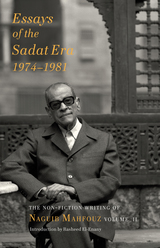 Essays of the Sadat Era: The Non-Fiction of Naguib Mahfouz: Volume II
Naguib Mahfouz
Gingko, 2025 This volume of articles written by Naguib Mahfouz between 1971 and 1981 serves as a portrait of a volatile period in Egypt’s history, which began with the Corrective Revolution and the Yom Kippur War with Israel and ended with the assassination of President Anwar El-Sadat.
In these essays of the Sadat era, published in the state-owned Al-Ahram newspaper, Mahfouz seems an unreliable narrator. The tension between an author who rails against censorship, yet is bound within its confines, runs through this fascinating body of nonfiction writing. Nonetheless, Mahfouz’s own thoughts are unmistakably present. We gain his insight into diverse political topics, such as socioeconomic class, democracy and dictatorship, and Islam and extremism, topics which still seem highly pertinent to the situation in Egypt today.
A vital accompaniment to his literature, this collected work is contemporaneous with Mahfouz’s fictional works such as Karnak Café, The Harafish, and Arabian Nights and Days. Essays of the Sadat Era is the second of four volumes in which Mahfouz’s nonfiction work is translated into English for the first time.
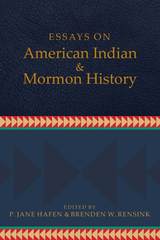 Essays on American Indian and Mormon History
Edited by P. Jane Hafen and Brenden W. Rensink
University of Utah Press, 2019 American Indians have long played a central role in Mormon history and its narratives. Their roles, however, have often been cast in support of traditional Mormon beliefs and as a reaffirmation of colonial discourses.
This collection of essays, many the result of a seminar hosted by the Charles Redd Center for Western Studies at Brigham Young University, explores the historical and cultural complexities of this narrative from a decolonizing perspective. Essays cover the historical construction of the “Lamanite,” settler colonialism and the Book of Mormon, and connections between the Seneca leader Handsome Lake and Joseph Smith. Authors also address American Indian Mormon tribal identities, Navajo and Mormon participation at the dedication of Glen Canyon Dam, the impact of Mormon Polynesian missionaries in Diné Bikéyah, the ISPP, and other topics. Prominent American Indian Mormon voices lend their creative work and personal experiences to the book.
With the aim of avoiding familiar narrative patterns of settler colonialism, contributors seek to make American Indians the subjects rather than the objects of discussion in relation to Mormons, presenting new ways to explore and reframe these relationships.
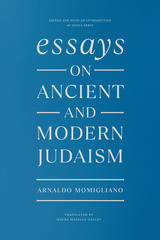 Essays on Ancient and Modern Judaism
Arnaldo Momigliano
University of Chicago Press, 1994 Arnaldo Momigliano (1908-87) was one of the most distinguished twentieth-century scholars of the classics and of ancient and modern history. Throughout his career, but especially in the final twenty years of his life, he wrote essays on a variety of Jewish themes and individuals. This volume collects twenty-six of these essays, most of which appear in English for the first time.
Momigliano acknowledged that his Judaism was the most fundamental inspiration for his scholarship, and the writings in this collection demonstrate how the ethical experience of the Hebraic tradition informed his other works. Part 1 is devoted entirely to writings on ancient and medieval Judaism. In these essays, Momigliano ranges over such subjects as the stages of rapport between Hellenism and Judaism, the figure of Flavius Josephus, and the salient moments of Maccabean history. Part 2 comprises Momigliano's writings on modern subjects. Here are profiles of Jewish scholars of the classical world (Bernays, Bickerman, and Finley) together with those of eminent representatives of contemporary Jewish thought (Strauss, Scholem, and Benjamin). These essays gain special significance alongside Momigliano's reflections on Italian Jewry and the Weberian interpretation of Judaism.
Silvia Berti's Introduction discusses Momigliano's religious and intellectual formation, the key events of his life, and the influence of Judaism on his mature scholarship. In his Preface, Momigliano offers a personal meditation on his own Judaism and that of his family.
By the time of his death, Momigliano had acquired an international following. This volume will at last give his admirers in the English-speaking world easy access to an important body of his work.
 Essays on Anscombe’s Intention
Anton Ford
Harvard University Press, 2011 G. E. M. Anscombe's Intention, firmly established the philosophy of action as a distinctive field of inquiry. Donald Davidson called this 94-page book "the most important treatment of action since Aristotle." But until quite recently, few scholars recognized the magnitude of Anscombe's philosophical achievement. This collection of ten essays elucidates some of the more challenging aspects of Anscombe's work and affirms her reputation as one of our most original philosophers.
Born in 1919, Anscombe studied at St. Hugh's College, Oxford, where she later held a research fellowship. In 1941 she married philosopher Peter Geach, with whom she had seven children. A close friend of Wittgenstein, in 1946 she joined Oxford's Somerville College and spent the next twenty-four years there before being appointed to the Chair of Philosophy at Cambridge that Wittgenstein had held. She died in 2001 after her long career as a highly regarded analytic philosopher.
This volume brings together fresh interpretations of Intention written by some of today's leading philosophers of action. It will enlighten Anscombe's readers who struggle with concepts they find puzzling or obscure, while providing a bracing corrective to doubts about Intention's significance and the gravity of what is at stake.
Essays on Archaeological Methods
Edited by James B. Griffin
University of Michigan Press, 1951 James B. Griffin edited this collection of essays, written by leading archaeologists of the time, on best practices for field and laboratory work. The hope was to improve the practice of archaeology and stimulate further research. Contributions by Albert C. Spaulding, Junius Bird, Frederick R. Matson, and others.
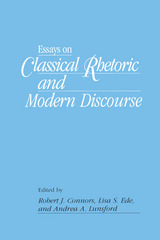 Essays on Classical Rhetoric and Modern Discourse
Edited by Robert J. Connors, Lisa S. Ede, and Andrea A. Lunsford
Southern Illinois University Press, 1984 Eighteen essays by leading scholars in English, speech communication, education, and philosophy explore the vitality of the classical rhetorical tradition and its influence on both contemporary discourse studies and the teaching of writing. Some of the essays investigate theoretical and historical issues. Others show the bearing of classical rhetoric on contemporary problems in composition, thus blending theory and practice. Common to the varied approaches and viewpoints expressed in this volume is one central theme: the 20th-century revival of rhetoric entails a recovery of the classical tradition, with its marriage of a rich and fully articulated theory with an equally efficacious practice. A preface demonstrates the contribution of Edward P. J.Corbett to the 20th-century revival, and a last chapter includes a bibliography of his works.
Essays on Economics and Economists
R. H. Coase
University of Chicago Press, 1994 How do economists decide what questions to address and how to choose their theories? How do they tackle the problems of the economic system and give advice on public policy? With these broad questions, Nobel laureate R. H. Coase, widely recognized for his seminal work on transaction costs, reflects on some of the most fundamental concerns of economists over the past two centuries.
In fifteen essays, Coase evaluates the contributions of a number of outstanding figures, including Adam Smith, Alfred Marshall, Arnold Plant, Duncan Black, and George Stigler, as well as economists at the London School of Economics in the 1930s.
Ronald H. Coase was awarded the Nobel Prize in Economic Science in 1991.
Essays on Economics and Economists
R. H. Coase
University of Chicago Press, 1994 This is an auto-narrated audiobook version of this book.
How do economists decide what questions to address and how to choose their theories? How do they tackle the problems of the economic system and give advice on public policy? With these broad questions, Nobel laureate R. H. Coase, widely recognized for his seminal work on transaction costs, reflects on some of the most fundamental concerns of economists over the past two centuries.
In fifteen essays, Coase evaluates the contributions of a number of outstanding figures, including Adam Smith, Alfred Marshall, Arnold Plant, Duncan Black, and George Stigler, as well as economists at the London School of Economics in the 1930s.
Ronald H. Coase was awarded the Nobel Prize in Economic Science in 1991.
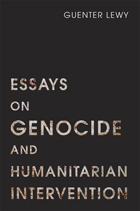 Essays on Genocide and Humanitarian Intervention
Guenter Lewy
University of Utah Press, 2012 The essays in this book, written over a span of some twenty years but updated for this publication, discuss episodes of mass murder that are often considered instances of genocide: the large-scale killing of Armenians in Ottoman Turkey during World War I, the near-extinction of North America’s Indian population, the vicious persecution of the “Roma” or Gypsies under the Nazi regime. But in line with Article II of the Genocide Convention of 1948, Lewy stresses the crucial importance of looking closely at the intent of the perpetrators. In contrast to the Holocaust, the killers in the atrocities mentioned above did not seek to destroy an entire people, and so, these three large-scale killings do not deserve the label of genocide. Lewy argues that affirming the distinctiveness of the Holocaust does not deny, downgrade, or trivialize the suffering of other people. The crimes against the Ottoman Armenians, the American Indians, and the Gypsies—even if they did not reach the threshold of genocide—involved horrendous suffering and a massive loss of life. The genocides of Cambodia and Rwanda that took place in the second half of the twentieth century remind us that man’s inhumanity to man can take many forms and is not the special prerogative of any particular group. The last essay of the collection deals with the complications of humanitarian intervention to prevent genocide. As the recent support of the Libyan rebels by NATO demonstrates, the issues raised here remain topical and controversial.
Essays on Gogol: Logos and the Russian Word
Susanne Fusso and Priscilla Meyer
Northwestern University Press, 1994 These fourteen essays reflect the increasingly interdisciplinary character of Russian literature research in general and of the study of Gogol in particular, focusing on specific works, Gogol's own character, and the various approaches to aesthetic, religious, and philosophical issues raised by his writing.
Essays on Individualism: Modern Ideology in Anthropological Perspective
Louis Dumont
University of Chicago Press, 1986 Louis Dumont's Essays on Individualism is an ambitious attempt to place the modern ideology of individualism in a broad anthropological perspective. The result of twenty years of scholarship and inquiry, the interrelated essays gathered here not only trace the genesis and growth of individualism as the dominant force in Western philosophy, but also analyze the differences between this modern system of thought and those of other, nonmodern cultures. The collection represents an important contribution to Western society's understanding of itself and its place in the world.
 Essays on Kant's Political Philosophy
Edited by Howard Lloyd Williams
University of Chicago Press, 1992 As a political philosopher, Kant has until recently been
overshadowed by his compatriots Hegel and Marx. With his
strong defense of the rights of the person and his deep
insight into the strengths and weaknesses of modern society
Kant, possibly more than any other political thinker,
anticipated the problems of the late twentieth century.
Kant's political philosophy, wedded as it is to rights,
reform and gradual progress, is emerging from the shadows
cast by Hegelian and Marxist thinking about the state.
In this volume, thirteen distinguished contributors from the
United States, Canada, Britain, and Germany cast light on
important aspects of Kant's liberal thinking. Key topics
covered include Kant's liberal reformism, his relation with
Hegel, his attitude to women, the use of reason, revolution,
Kant's optimism and his moral and legal rigorism.
Howard Williams is a reader in political theory in the
Department of International Politics, University College of
Wales, Aberystwyth. His previous publications include
Kant's Political Philosophy, Concepts of
Ideology, and Hegel, Heraclitus, and Marx's
Dialectic.
Essays on Karolina Pavlova
Susanne Fusso and Alexander Lehrman
Northwestern University Press, 2001 A collection of essays by American, Russian, and German scholars examining the work of the poet Karolina Pavlova.
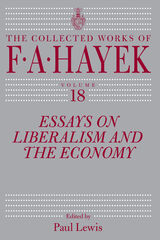 Essays on Liberalism and the Economy, Volume 18
F. A. Hayek
University of Chicago Press, 2022 A deft selection of unpublished and little-known works by F. A. Hayek that will serve to enlighten and enliven debates around the ever-changing face of Western liberalism
Across seventeen volumes to date, the University of Chicago Press’s Collected Works of F. A. Hayek series has anthologized the diverse and prolific writings of the Austrian economist synonymous with classical liberalism. Essays on Liberalism and the Economy traces the author’s long and evolving writings on the cluster of beliefs he championed most: liberalism, its core tenets, and how its tradition represents the best hope for Western civilization.
This volume contains material from almost the entire span of Hayek’s career, the earliest from 1931 and the last from 1984. The works were written for a variety of purposes and audiences, and they include—along with conventional academic papers—encyclopedia entries, after-dinner addresses, a lecture for graduate students, a book review, newspaper articles, and letters to the editors of national newspapers. While many are available elsewhere, two have never appeared in print, and two others have not been published in English.
The varied formats collected here are enriched by Hayek’s changing voice at different stages of his life. Some of the pieces resonate as high-minded and noble; some are meant as cuts to “intellectuals” (a pejorative term when used by Hayek) like Keynes and Galbraith. All serve to distill important threads of his worldview.
Essays on Literature and Philosophy: The Non-Fiction of Naguib Mahfouz: Volume I
Naguib Mahfouz
Gingko, 2025 The nonfiction writing of Naguib Mahfouz, presented in English for the first time.
The first Arabic language writer to win the Nobel Prize for Literature, Naguib Mahfouz, helped bring Arabic writing to an international readership. This collection of his early writing, from his time as a philosophy student, reveals the intellectual ferment of the young author, grappling with two millennia of philosophers and writers and establishing his own voice among them.
Available in English for the first time, these essays tackle a vast array of subjects, from Presocratic Philosophy to love and the sexual impulse. The intellectual development demonstrated here forms the foundation of Mahfouz’s literary work, granting insight into the mind behind such famed works as the Cairo Trilogy and Children of The Alley.
 Essays on Mandel’stam
Kiril Taranovsky
Harvard University Press, 1976 Osip Mandel'stam is coming to be recognized as one of the major poets of our century. He is also one of the most enigmatic. Kiril Taranovsky's erudite knowledge of Russian poetry and his mastery of textual analysis are here combined to produce the most successful interpretation of Mandel'stam's verse yet published.
Individual poems are read on three levels: the text itself; the historical and poetic context of the poem; and its “subtext,” the motifs, images, and patterns Mandel'stam appropriates for his own purposes from the work of other writers. Verses analyzed are quoted in the original. The author demonstrates how the meaning and imagery of the poems relate to a context of personal experience and poetic tradition. In this discussion he draws on his extensive comprehension of European traditions; yet his revelation of literary connections never obscures the linguistic expressiveness and imagistic vividness of Mandel'stam's work. By correlating the text and a suggested subtext he isolates a specific procedure in Mandel'stam and also a fundamental principle in modern poetry. Thus his contribution is to the broader theory of poetics as well as to specific study of this one great poet.
Essays on Medieval Music in Honor of David G. Hughes
Graeme Boone
Harvard University Press, 1995 This collection of nineteen essays presents a broad spectrum of current research that will interest students of medieval music, history, or culture. Topics include a comparison of early chant transmission in Rome and Jerusalem; the relationship between the earliest chant notation and prosodic accents; conceptualizing rhythm in medieval music and poetry; the persistence of Guidonian organum in the later Middle Ages; a connection between Dante and St. Cecilia; and the development of the trecento madrigal. The essays, written by distinguished scholars, stem from a conference in honor of David G. Hughes, professor of medieval music at Harvard University and noted specialist of chant.
Essays on Mexican Kinship
Hugo G. Nutini
University of Pittsburgh Press, 1976 Essays in Mexican Kinship offers new and important data on the social structure of Indian and rural Mestizo communities of Mexico, particularly those of the highlands, and provides models and suggestions for future research.
Essays on Music and History in Africa
Edited by Klaus P. Wachsmann
Northwestern University Press, 1971 This classic ethnomusicological survey provides as a valuable guide to African music. The essays review a broad swath of genres and topics, including court songs and music history, musical instruments in different traditions, and the connection between Islam and African music. Contributors are Lois Ann Anderson, John Blacking, Philip J. C. Dark, David M. Dixon, Akin Euba, John D. Fage, Matthew Hill, A. M. Jones, Percival R. Kirby, J. H. Kwabena Nketia, Gilbert Rouget, David K. Rycroft, and Klaus P. Wachsmann.
 Essays on Religion and the Ancient World
Arthur Darby Nock
Harvard University Press Throughout his career Arthur Darby Nock (1902-1963) made unique and lasting contributions to classical scholarship and the history of religion, especially to the study of ancient religion, magic, and the relation of paganism to early Christianity and Judaism. Nock's genius showed itself early: endowed with a prodigious memory and an unerring linguistic skill, he combined speed and accuracy in reading and a delight in the discovery, ordering and establishment of facts. At the age of twenty he was made annual reviewer of Latin literature for The Year's Work in Classical Studies; and at twenty-four he produced an important edition of a fourth-century Greek text, Sallustius On the Gods and the Universe, which included a translation and a masterly introduction.
At twenty-seven, having come to the United States from England the year before, Nock was appointed Frothingham Professor of the History of Religion at Harvard University. In his early thirties he wrote two books, Conversion--an imaginative and exacting study of religious currents in the Hellenistic and Roman world--and St. Paul.
Mainly, however, A. D. Nock poured his immense learning into articles and reviews, which heretofore have been scattered through many different journals. Representing a formidable range of learning, these essays deal for the most part with historical evidence (from all sources, including papyri, inscriptions, and coins) of the beliefs, superstitions, and religious practices of ordinary people. Nock saw the essence of religion not only in philosophy ortheology, but in piety and cult, in the practices and the expressions of the common man. His unusual combination of genius and common sense allowed him to treat the actual manifestations of religious sentiment without condescension.
For this edition of Arthur Darby Nock's writings, Zeph Stewart has garnered a substantial selection of Nock's most important essays and has indexed and cross-referenced them as well.
 Essays on Religion and the Ancient World
Arthur Darby Nock
Harvard University Press Throughout his career Arthur Darby Nock (1902-1963) made unique and lasting contributions to classical scholarship and the history of religion, especially to the study of ancient religion, magic, and the relation of paganism to early Christianity and Judaism. Nock's genius showed itself early: endowed with a prodigious memory and an unerring linguistic skill, he combined speed and accuracy in reading and a delight in the discovery, ordering and establishment of facts. At the age of twenty he was made annual reviewer of Latin literature for The Year's Work in Classical Studies; and at twenty-four he produced an important edition of a fourth-century Greek text, Sallustius On the Gods and the Universe, which included a translation and a masterly introduction.
At twenty-seven, having come to the United States from England the year before, Nock was appointed Frothingham Professor of the History of Religion at Harvard University. In his early thirties he wrote two books, Conversion--an imaginative and exacting study of religious currents in the Hellenistic and Roman world--and St. Paul.
Mainly, however, A. D. Nock poured his immense learning into articles and reviews, which heretofore have been scattered through many different journals. Representing a formidable range of learning, these essays deal for the most part with historical evidence (from all sources, including papyri, inscriptions, and coins) of the beliefs, superstitions, and religious practices of ordinary people. Nock saw the essence of religion not only in philosophy ortheology, but in piety and cult, in the practices and the expressions of the common man. His unusual combination of genius and common sense allowed him to treat the actual manifestations of religious sentiment without condescension.
For this edition of Arthur Darby Nock's writings, Zeph Stewart has garnered a substantial selection of Nock's most important essays and has indexed and cross-referenced them as well.
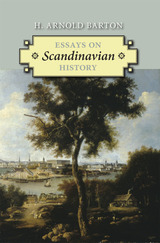 Essays on Scandinavian History
H. Arnold Barton
Southern Illinois University Press, 2008 Essays on Scandinavian History examines important aspects of the history of Sweden and its Nordic neighbors between the later eighteenth and the beginning of the twenty-first century. Historian H. Arnold Barton has selected thirteen of the numerous essays he has published over the past forty years on the history of Scandinavia. This is a companion volume to Barton's The Old Country and the New, an essay collection on Swedish emigration and the Swedes in America. Included here are studies of the special significance of the eighteenth century in Sweden's history and culture, the relationship of King Gustaf III to the eighteenth-century Enlightenment, the impact of the American Revolution in Sweden, and Gustaf III's ambitions in the East Baltic region. Also detailed are the king's early reaction to the French Revolution and his efforts to organize a European coalition to crush it, a reassessment of the reign and internal reforms of Gustaf IV Adolf, and the Swedish succession crises of 1809 and 1810. In addition, Barton examines the increasing tension between the Pan-Scandinavian movement and the rising Finnish national movement. He deals with the historians of the Danish Agrarian Reforms of 1784-1814, parallel developments in Finland and Norway between 1808 and 1917, the discovery of Norway abroad, Swedish national romanticism, and Sweden's transition from a warfare state to a welfare state, now exemplifying the rational and humane ideals of the twentieth century. Essays on Scandinavian History highlights important topics in the history of the Scandinavian region, which has remained all too little known outside the Nordic lands themselves, while also offering broader perspectives on Europe since the mid-eighteenth century. Twelve keyed-to-text illustrations, a bibliography of Barton's publications on Scandinavian history, essay endnotes, and an index augment this work.
Essays on Sex Equality
John Stuart Mill and Harriet Taylor Mill
University of Chicago Press, 1970 This volume brings together for the first time all the writings of John Stuart Mill and Harriet Taylor Mill on equality between the sexes, including John Stuart Mill's The Subjection of Women, a classic in the history of the women's rights movement since its publication one hundred years ago.
Also contained in this volume is a major interpretative essay by Alice S. Rossi on Mill and Harriet Taylor which describes and analyzes their long personal and intellectual relationship.
Essays on Some Maladies of Angola (1799)
José Pinto De Azeredo
Tagus Press, 2016 Western science and pharmacology first learned about many African diseases, remedies, and medicinal practices through José Pinto de Azeredo’s highly original and influential text. A unique Enlightenment-era medical text written specifically about health issues in Angola, this is the first work by a Portuguese physician to describe accurately, through first-hand observation, medical practices and substances used in Angola during the peak period of the transatlantic slave trade. This first English-language edition of Essays on Some Maladies of Angola was translated by Stewart Lloyd-Jones (University of Stirling) and includes scholarly essays by Timothy Walker (University of Massachusetts Dartmouth), Adelino Cardoso (Universidade Nova de Lisboa), António Braz de Oliveira (Biblioteca Nacional de Portugal) and Manuel Silvério Marques (Universidade de Lisboa).
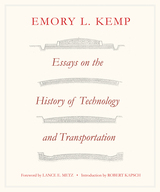 Essays on the History of Transportation and Technology
EMORY L. KEMP
West Virginia University Press, 2014 Emory Kemp is the founder and director of the Institute for the History of Technology and Industrial Archaeology at West Virginia University, where he also served as a chair and professor of civil engineering and a professor of history. This collection of essays encompasses over fifty years of his research in the field of the history of technology. Within these twelve essays, Kemp describes and analyzes nineteenth century improvements in building materials such as iron, steel, and cement; roads and bridges, especially the evolution of the suspension bridge; canals and navigable rivers, including the Ohio River and its tributaries; and water supply systems. As one of the few practicing American engineers who also researches and writes as an academic, Kemp adds an important historical context to his work by focusing not only on the construction of a structure but also on the analytical science that heralds a structure’s design and development.
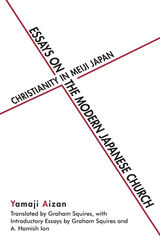 Essays on the Modern Japanese Church: Christianity in Meiji Japan
Yamaji Aizan; Translated by Graham Squires, with Introductory Essays by Graham Squires and A. Hamish Ion
University of Michigan Press, 2000 Essays on the Modern Japanese Church (Gendai Nihon kyokai shiron), published in 1906, was the first Japanese-language history of Christianity in Meiji Japan. Yamaji Aizan’s firsthand account describes the reintroduction of Christianity to Japan—its development, rapid expansion, and decline—and its place in the social, political, and intellectual life of the Meiji period. Yamaji’s overall argument is that Christianity played a crucial role in shaping the growth and development of modern Japan. Yamaji was a strong opponent of the government-sponsored “emperor-system ideology,” and through his historical writing he tried to show how Japan had a tradition of tolerance and openness at a time when government-sponsored intellectuals were arguing for greater conformity and submissiveness to the state on the basis of Japanese “national character.” Essays is important not only in terms of religious history but also because it highlights broad trends in the history of Meiji Japan. Introductory chapters explore the significance of the work in terms of the life and thought of its author and its influence on subsequent interpretations of Meiji Christianity.
Essays on Twentieth-Century History
Edited by Michael Adas for the American Historical Association
Temple University Press, 2010 In the sub-field of world history, there has been a surprising paucity of thinking and writing about how to approach and conceptualize the long twentieth century from the 1870s through the early 2000s. The historiographic essays collected in Essays on Twentieth Century History will go a long way to filling that lacuna. Each contribution covers a key theme and one or more critical sub-fields in twentieth century global history. Chapters address migration patterns, the impact of world wars, transformations in gender and urbanization, as well as environmental transitions. All are written by leading historians in each of the sub-fields represented, and each is intended to provide an introduction to the literature, key themes, and debates that have proliferated around the more recent historical experience of humanity.
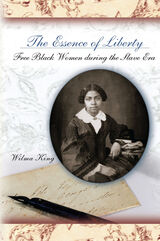 The Essence of Liberty: Free Black Women During the Slave Era
Wilma King
University of Missouri Press, 2006 Before 1865, slavery and freedom coexisted tenuously in America in an environment that made it possible not only for enslaved women to become free but also for emancipated women to suddenly lose their independence. Wilma King now examines a wide-ranging body of literature to show that, even in the face of economic deprivation and draconian legislation, many free black women were able to maintain some form of autonomy and lead meaningful lives.
The Essence of Liberty blends social, political, and economic history to analyze black women’s experience in both the North and the South, from the colonial period through emancipation. Focusing on class and familial relationships, King examines the myriad sources of freedom for black women to show the many factors that, along with time spent in slavery before emancipation, shaped the meaning of freedom. Her book also raises questions about whether free women were bound to or liberated from gender conventions of their day.
Drawing on a wealth of untapped primary sources—not only legal documents and newspapers but also the diaries, letters, and autobiographical writings of free women—King opens a new window on the world of black women. She examines how they became free, educated themselves, found jobs, maintained self-esteem, and developed social consciousness—even participating in the abolitionist movement. She considers the stance of southern free women toward their enslaved contemporaries and the interactions between previously free and newly freed women after slavery ended. She also looks closely at women’s spirituality, disclosing the dilemma some women faced when they took a stand against men—even black men—in order to follow their spiritual callings.
Throughout this engaging history, King underscores the pernicious constraints that racism placed on the lives of free blacks in spite of the fact that they were not enslaved. The Essence of Liberty shows the importance of studying these women on their own terms, revealing that the essence of freedom is more complex than the mere absence of shackles.
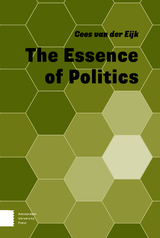 The Essence of Politics
Cees van der Eijk
Amsterdam University Press, 2018 What is politics about? At its core, politics is about resolving matters that are contested in a society or group. It exists not only within and between states, but also within religious institutions, sports organisations, commercial enterprises, schools and social organisations. Politics is driven by conflict, but also by cooperation. To understand politics, we must ask specific ('key') questions about the nature of political conflict, about persons, groups and institutions that are involved, about their resources, and about the wider context that both constrains and provides opportunities for all. It also requires an understanding of concepts such as power, influence and political community, and, of course, of the terms politics, conflict and cooperation.
This book is about the 'essence' of politics, which is introduced by way of key questions and concepts that are indispensable for understanding politics in many different settings.
 The Essence of Politics
Kamandaki
Harvard University Press A foray into to the complexities of statecraft and leadership in medieval India.
Kamandaki’s Nītisāra, or The Essence of Politics, redefined the field of political thought in early medieval India and became one of the most influential works in the genre across South and Southeast Asia. It was likely written during or shortly after the Gupta Empire (c. 325–550 CE) and enjoyed wide popularity for nearly a millennium.
An elegant introduction to the intricacies of statecraft, The Essence of Politics encompasses virtually all aspects of elite social life, making it indispensable for generals, spies, ministers, and other members of the royal court, especially poets writing about war and conquest. Addressed directly to the king, its lessons range from the finer points of military strategy and economic policy to the moral qualities of effective rulers. Kamandaki anchors political practice in intellectual and spiritual discipline. His model of leadership, based on self-control and personal cultivation, is as relevant today as it was in its own time.
The Sanskrit text, presented here in the Devanagari script, accompanies a new English prose translation.
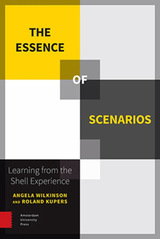 The Essence of Scenarios: Learning from the Shell Experience
Angela Wilkinson and Roland Kupers
Amsterdam University Press, 2014 In 1965, Royal Dutch Shell started experimenting with a new approach to preparing for the future. This approach, called scenario planning, eschewed forecasting in favor of plausible alternative stories. By using stories, or Ÿscenarios,Œ Shell aimed to avoid the false assumption that the future would look much like the present“an assumption that marred most corporate planning at the time. The Essence of Scenarios offers unmatched insight into the company’s innovative practice, which still has a huge influence on the way businesses, governments, and other organizations think about and plan for the future.
In the course of their research, Angela Wilkinson and Roland Kupers interviewed almost every living veteran of the Shell scenario planning operation, along with many top Shell executives from later periods. Drawing on these interviews, the authors identify several principles that characterize the Shell process and explain how it has survived and thrived for so long. They also enumerate the qualities of successful Shell scenarios, which above all must be plausible stories with logical trajectories. Ultimately, Wilkinson and Kupers demonstrate the value of scenario planning as a sustained practice, rather than as a one-off exercise.
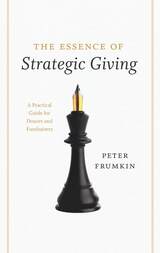 The Essence of Strategic Giving: A Practical Guide for Donors and Fundraisers
Peter Frumkin
University of Chicago Press, 2010 In the face of global financial problems and stressed government budgets, the ability of private philanthropy to step in and help solve public problems—and support vital private institutions as well—has perhaps never been more important. But how can donors be sure their contributions will be effective? And how can fundraisers make their case for support in a way that is compelling and productive?
With The Essence of Strategic Giving, Peter Frumkin distills the lessons of his comprehensive, award-winning study, Strategic Giving, into a concise, practical guide for everyone involved in private philanthropy, from donors to managers of nonprofits to fund-raisers. He defines five critical challenges that all donors must address if their philanthropy is to amount to more than indiscriminate charity, including being aware of the time frame that guides a gift, specifying the intended impact being pursued, and recognizing how a donation fits with a donor’s own identity and style. Acknowledging and understanding these fundamental, strategic aspects of giving, Frumkin argues, will help ensure philanthropy that more effectively achieves its aims—and at the same time builds a lasting relationship between donors and the institutions they support.
As the next generation of donors wrestle with the challenge of effectively distributing what Andrew Carnegie called “surplus wealth,” Frumkin’s road map will be an indispensible resource for years to come.
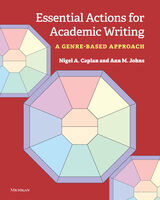 Essential Actions for Academic Writing: A Genre-Based Approach
Nigel A. Caplan and Ann M. Johns
University of Michigan Press, 2022 Essential Actions for Academic Writing is a writing textbook for all beginning academic students, undergraduate or graduate, to help them understand how to write effectively throughout their academic and professional careers. Essential Actions combines genre research, proven pedagogical practices, and short readings to help students writing in their first, second, or additional languages to develop their rhetorical flexibility by exploring and practicing the key actions that will appear in academic assignments, such as explaining, summarizing, synthesizing, and arguing. Part I: - Introduces students to rhetorical situation, genre, register, source use, and a framework for understanding how to approach any new writing task.
- Demonstrates that all writing responds to a context that includes the writer’s identity, the reader’s expectations, the purpose of the text, and the conventions that shape it.
Part II: - Explores the essential actions of academic writing (explain, summarize, synthesize, report and interpret data, argue, respond, and analyze).
- Provides examples of the genres and language that support each action.
Part III: - Offers four extended projects that combine the essential actions in different genres and contexts.
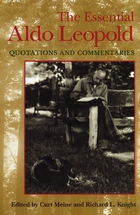 The Essential Aldo Leopold: Quotations and Commentaries
Edited by Curt D. Meine and Richard L. Knight
University of Wisconsin Press, 1999 For the first time, the most important quotations of the great conservationist Aldo Leopold, author of A Sand County Almanac, are gathered in one volume. From conservation education to wildlife ecology, from wilderness protection to soil and water conservation, the writings of Aldo Leopold continue to have profound influence on those seeking to understand the earth and its care. Leopold biographer Curt Meine and noted conservation biologist Richard Knight have assembled this comprehensive collection of quotations from Leopold’s extensive and diverse writings, selected and organized to capture the richness and depth of the North American conservation movement.
Prominent biologists, conservationists, historians, and philosophers provide introductory commentaries describing Leopold’s contributions in varied fields and reflecting upon the significance of his work today.
Contributors:
J. Baird Callicott
David Ehrenfeld
Susan L. Flader
Eric T. Freyfogle
Wes Jackson
Paul W. Johnson
Joni L. Kinsey
Richard L. Knight
Gary K. Meffe
Curt Meine
Gary Paul Nabhan
Richard Nelson
Bryan G. Norton
David W. Orr
Edwin P. Pister
Donald Snow
Stanley A. Temple
Jack Ward Thomas
Charles Wilkinson
Terry Tempest Williams
Donald Worster
Joy B. Zedler
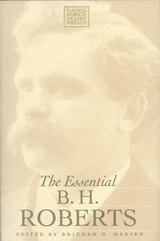 The Essential B. H. Roberts
Brigham D. Madsen
Signature Books, 2000 Although Brigham H. Roberts was an LDS general authority, he was by public consensus and his own admission an intellectual. Consequently, and due to the painfully earnest, meticulous way he approached any issue of consequence and his intimate familiarity with Western thought, he occasionally appeared to be knowingly contradictory. Readers are therefore left to judge whether he vacillated over time, tailored his message to the audience on a “milk-before-meat” principle, or was comfortable camouflaging his real intent in metaphor.
On one occasion Roberts defended the traditional Mormon view of the godhead—perfected men who “eat, drink … and procreate” as exalted mortals; another time he seemed less comfortable imposing limitations on a God who cannot be fixed to a single location, for whom Jesus was a mortal incarnation, and for whom the term “trinity” seemed more eloquent than the “presidency of heaven.”
His most famous and penetrating analysis focused on the Book of Mormon. In this collection Roberts discusses the mode of its translation, while stopping short of saying that God, who speaks to humans in their own language, could have authored the inconsistent grammar that appeared luminously in Joseph Smith’s seer stone. Instead he credits this to Smith’s own linguistic contribution, thereby preserving for God a fitting transcendence. Later Roberts went so far as to question the Book of Mormon’s historicity.
A final example of Roberts’s complexity: He proclaimed in public the perfect unity and harmony found at church conferences, but he privately castigated his colleagues for what he considered to be obstinance. He once asked what additional, irrational proposal “may occur to some genius” in the Quorum of the Twelve.
A paradox still, this feisty president of the church’s Seventies continues to provoke mixed and heated feelings, as expressed by a Scottish immigrant working in the First Presidency’s office who one day said to Roberts: “Aye, mon, the frankness of it. How dare you do it, mon?” But for those who are sincere and secure in their faith, Roberts can provide a delightfully rewarding journey. Consider just the following four, short excerpts from this compilation—two are originally from Roberts’s published works and two are from his personal letters:
“It is not given to mortal man always to walk upon that plane where the sunlight of God’s inspiration is playing upon him. Sometimes the servants of God speak merely from their human knowledge, influenced by passions; influenced by the interests of men, and by anger, and vexation. When they so speak, that is not likely to be the word of God. In any event it must be allowed by us that many unwise things were said in times past that did not possess the value of scripture, or anything like it; and it was not revelation.”
“What has become, in the church, of the principle that governments derive their just powers from the consent of the governed? Will it be enough to say that the consent of the governed can come later when nominations have been made by leaders? The procedure may be so, and the quorums thus ignored may silently submit, and the matter going on in a dull, gray, and sullen manner; but you will have no esprit de corps in the quorums; and young men of active minds will grow restive. Why not regard them as having some judgment, and right to have a voice in nominating those with whom they are to work?”
“So I say that when the churches turn to secular government to enforce religious doctrines and discipline, they abandon their legitimate sphere and enter one wholly repugnant to their principles. When churches thus abandon their confidence in the power of truth, they play havoc with their own authority.”
“My dear Bishop Nibley, let me commend you for the delicacy with which you can tell the poor ‘theorist’ to ‘get off the earth.’ I know not if you were born with such delicacy or have acquired it, but in either event it challenges one’s admiration. You write that ‘You (myself) are a theorist, while he (Senator-Apostle Smoot) is needed and has a place in the economy of things.’ That is decidedly good. There is but one thing more you could have suggested to my advantage; you might have indicated the particular location in oblivion where you would be willing for me to sit.”
Brigham Henry Roberts was born in England in 1857. Among his other achievements, he was president of the LDS First Quorum of Seventy and Assistant Church Historian. His numerous books include: (historical) A Comprehensive History of the Church, Joseph Smith: The Prophet-Teacher, The Life of John Taylor, Outlines of Ecclesiastical History, and (theological) A New Witness for God, the Mormon Doctrine of Deity, and the Seventy’s Course in Theology—all of which are considered authoritative, and for which Roberts earned the epithet, “Defender of the Faith.” He died in 1933.
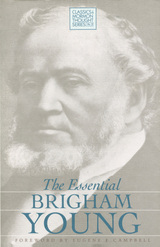 The Essential Brigham Young
Eugene E. Campbell
Signature Books, 1992 After converting to Mormonism in 1832, Brigham Young (1801-77) quickly rose to prominence and was called to the Quorum of Twelve Apostles within three years. He personally directed the highly successful 1839 proselyting mission to Great Britain, and he was appointed president of the Twelve Apostles the following year. In 1846-47 he oversaw the epic colonization of the Intermountain West.
Self-educated and preoccupied with the day-to-day business of his widespread empire, Young rarely found time to read. But he delivered hundreds of lively, extemporaneous sermons which blended common sense with theological speculation. Such homespun treatises carried an immediacy that was absent from the philosophically-oriented studies of his ecclesiastical colleague Orson Pratt, though, at the same time, Young’s speeches could be unfocused and contradictory.
Several of the more controversial teachings that Young promulgated—Adam-as-God, divine omniscience, and blood atonement—have sparked considerable debate since they were first uttered more than one hundred years ago. “Will you love your brothers and sisters likewise,” he once asked, “when they have committed a sin that cannot be atoned for without the shedding of their blood? Will you love that man or woman well enough to shed their blood?”
Other favorite topics were the “personality of God,” “election and reprobation,” and “the resurrection.” His sermons usually begin in a chatty way: “I remarked last Sunday that I had not felt much like preaching,” or “When I contemplate the subject of salvation, and rise before a congregation to speak upon that all-important matter, it has been but a few times in my life that I could see a beginning point to it, or a stopping place.” Readers will find themselves drawn into the rhythm of Young’s rhetoric in the same way as his original hearers were.
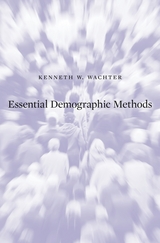 Essential Demographic Methods
Kenneth W. Wachter
Harvard University Press, 2014 Essential Demographic Methods brings to readers the full range of ideas and skills of demographic analysis that lie at the core of social sciences and public health. Classroom tested over many years, filled with fresh data and examples, this approachable text is tailored to the needs of beginners, advanced students, and researchers alike. An award-winning teacher and eminent demographer, Kenneth Wachter uses themes from the individual lifecourse, history, and global change to convey the meaning of concepts such as exponential growth, cohorts and periods, lifetables, population projection, proportional hazards, parity, marity, migration flows, and stable populations. The presentation is carefully paced and accessible to readers with knowledge of high-school algebra. Each chapter contains original problem sets and worked examples.
From the most basic concepts and measures to developments in spatial demography and hazard modeling at the research frontier, Essential Demographic Methods brings out the wider appeal of demography in its connections across the sciences and humanities. It is a lively, compact guide for understanding quantitative population analysis in the social and biological world.
The Essential Eldercare Handbook for Nevada
Kim Boyer
University of Nevada Press, 2014 The senior years can be daunting, for spouses, children, other caregivers, and seniors themselves. Too often a sudden crisis leaves a family unprepared and feeling helpless. Chronic illnesses and limited funds can present difficult and emotional choices regarding care or housing. Rules and resources vary from state to state. Everyone can use help from experienced professionals in understanding them.
Boyer and Shapiro provide Nevada-specific information\--medical, legal, and financial\--on the wide range of problems that arise during the elder years. Case studies show how a typical family copes with troubles such as failing health or financial cares and what options they have. This guide will help any Nevada resident plan for their own senior years and take care of aging parents, spouses, and other loved ones.
 Essential Essays (Two-volume set): Foundations of Cultural Studies & Identity and Diaspora
Stuart Hall
Duke University Press, 2018 Volumes 1 and 2 of Stuart Hall's Essential Essays are available as a set
From his arrival in Britain in the 1950s and involvement in the New Left, to founding the field of cultural studies and examining race and identity in the 1990s and early 2000s, Stuart Hall has been central to shaping many of the cultural and political debates of our time. Essential Essays—a landmark two volume set—brings together Stuart Hall's most influential and foundational works. Spanning the whole of his career, these volumes reflect the breadth and depth of his intellectual and political projects while demonstrating their continued vitality and importance.
Volume 1: Foundations of Cultural Studies focuses on the first half of Hall's career, when he wrestled with questions of culture, class, representation, and politics. This volume's stand-out essays include his field-defining “Cultural Studies and Its Theoretical Legacies;” the prescient “The Great Moving Right Show,” which first identified the emergent mode of authoritarian populism in British politics; and “Encoding and Decoding in the Television Discourse,” one of his most influential pieces of media criticism. As a whole, Volume 1 provides a panoramic view of Hall's fundamental contributions to cultural studies.
Volume 2: Identity and Diaspora draws from Hall's later essays, in which he investigated questions of colonialism, empire, and race. It opens with “Gramsci's Relevance for the Study of Race and Ethnicity,” which frames the volume and finds Hall rethinking received notions of racial essentialism. In addition to essays on multiculturalism and globalization, black popular culture, and Western modernity's racial underpinnings, Volume 2 contains three interviews with Hall, in which he reflects on his life to theorize his identity as a colonial and diasporic subject.
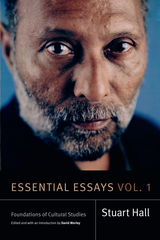 Essential Essays, Volume 1: Foundations of Cultural Studies
Stuart Hall
Duke University Press, 2018 From his arrival in Britain in the 1950s and involvement in the New Left, to founding the field of cultural studies and examining race and identity in the 1990s and early 2000s, Stuart Hall has been central to shaping many of the cultural and political debates of our time. Essential Essays—a landmark two-volume set—brings together Stuart Hall's most influential and foundational works. Spanning the whole of his career, these volumes reflect the breadth and depth of his intellectual and political projects while demonstrating their continued vitality and importance.
Volume 1: Foundations of Cultural Studies focuses on the first half of Hall's career, when he wrestled with questions of culture, class, representation, and politics. This volume's stand-out essays include his field-defining “Cultural Studies and Its Theoretical Legacies"; the prescient “The Great Moving Right Show,” which first identified the emergent mode of authoritarian populism in British politics; and “Encoding and Decoding in the Television Discourse,” one of his most influential pieces of media criticism. As a whole, Volume 1 provides a panoramic view of Hall's fundamental contributions to cultural studies.
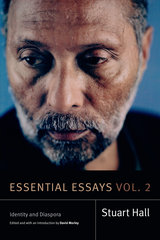 Essential Essays, Volume 2: Identity and Diaspora
Stuart Hall
Duke University Press, 2018 From his arrival in Britain in the 1950s and involvement in the New Left, to founding the field of cultural studies and examining race and identity in the 1990s and early 2000s, Stuart Hall has been central to shaping many of the cultural and political debates of our time. Essential Essays—a landmark two-volume set—brings together Stuart Hall's most influential and foundational works. Spanning the whole of his career, these volumes reflect the breadth and depth of his intellectual and political projects while demonstrating their continued vitality and importance.
Volume 2: Identity and Diaspora draws from Hall's later essays, in which he investigated questions of colonialism, empire, and race. It opens with “Gramsci's Relevance for the Study of Race and Ethnicity,” which frames the volume and finds Hall rethinking received notions of racial essentialism. In addition to essays on multiculturalism and globalization, black popular culture, and Western modernity's racial underpinnings, Volume 2 contains three interviews with Hall, in which he reflects on his life to theorize his identity as a colonial and diasporic subject.
The Essential Etheridge Knight
Etheridge Knight
University of Pittsburgh Press, 1986 Seminal African American poet Etheridge Knight did not begin writing poetry until a robbery conviction sent him to prison in 1960. A Korean War veteran who suffered a shrapnel wound that led to drug addiction, Knight published his first collection in 1968, Poems from Prison, which set him apart as an important new voice in the Black Arts Movement. His second collection, Belly Songs and Other Poems (1973), earned him Pulitzer Prize and National Book Award nominations, and his third collection, Born of a Woman: New and Selected (1980), was also critically acclaimed. The Essential Etheridge Knight is a selection of the best work by one of the country’s most prominent and still-relevant poets, decades after his death. It brings together poems from Knight’s three previously published books and a section of later poems available only in this collection, which features a striking new cover.
The Essential Factors of Social Evolution
Thomas Nixon Carver
Harvard University Press Professor Carver emphasizes the idea of survival value as the leading factor in the evolutionary process. This definitely connects social with biological evolution and shows that social evolution is merely a continuation of the process of biological evolution through variation and selection. In social evolution, however, variation among social groups and the survival of the adapted groups is added to the biologist's variation among individuals and the survival of adapted individuals. Professor Carver not merely expresses his own views on social life but also brings out in clear relief the leading ideas of the various writers in the specific field of sociology. The book will accordingly prove an excellent text-book for college courses as well as a most enlightening discussion for the general reader.
 Essential Facts in Cardiovascular Medicine: Board Review and Clinical Pearls
Yeghiazarians, Yerem
Rutgers University Press, 2018 The treatment and management of cardiovascular disease has seen rapid advances in recent years; as a trainee or practitioner of cardiovascular medicine, it can be difficult to find the time to stay abreast of recent updates in information. Unlike standard exhaustive text and reference titles, Essential Facts in Cardiovascular Medicine provides the most critical facts and clinical pearls of cardiovascular medicine, in a high-yield, concise, bulleted format that can fit in your pocket. Essential Facts in Cardiovascular Medicine is the perfect guide to enhance your cardiovascular knowledge, prepare for board examinations, and improve clinical practice.
Essential Facts in Cardiovascular Medicine covers numerous important topics from the basics of Statistics, to factoids in General Cardiology, Physical Exam, EKG, Congenital Heart Disease, Valvular Heart Disease, Heart Failure/Transplant, Acute Coronary Syndromes, Pericardial Diseases, Electrophysiology, Pharmacology, Pregnancy, Pulmonary Hypertension, Peripheral Vascular Disease, Echocardiography, Formulas, Interventional Cardiology and Cardiac Tumors.
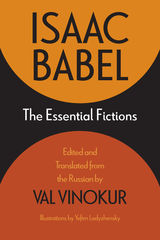 The Essential Fictions
Isaac Babel; Edited and translated from the Russian by Val Vinokur; Illustrations by Yefim Ladyzhensky
Northwestern University Press, 2018 The Essential Fictions offers contemporary readers seventy-two short stories by one of twentieth-century Russia’s premier storytellers, Isaac Babel. This unique volume, which includes Babel’s famous Red Cavalry series and his Odessa Stories, is translated, edited, introduced, and annotated by Val Vinokur, a 2008 Guggenheim Fellow in Translation, and features illustrations by Yefim Ladyzhensky, a painter known for his depictions of everyday life under Soviet rule in Babel’s native Odessa. Babel was born in 1894 into multicultural Odessa’s thriving Jewish community. Working as a journalist, he witnessed the Bolshevik Revolution and Civil War, and accompanied the Cossack horsemen of the Red Cavalry during the 1920 Polish-Soviet War, distilling these experiences into his fiction. Vinokur highlights Babel’s “horrified hopefulness” and “doleful and bespectacled Jewish comedy” in the face of the bloody conflicts that plagued his generation. On the centenary of the revolution that toppled the Romanov tsars, Babel’s fictions continue to absorb and fascinate contemporary readers interested in eastern European and Jewish literature as well as the history and politics of the twentieth century.
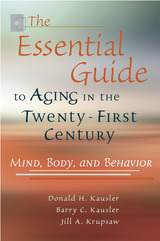 The Essential Guide to Aging in the Twenty-First Century: Mind, Body, and Behavior
Donald H. Kausler, Barry C. Kausler & Jill A. Krupsaw
University of Missouri Press, 2007
For more than a decade, The Graying of America has helped thousands of middle-aged and senior citizens find their way through the thickets and thorns of growing old. Now greatly revised and expanded to include information gleaned from studies of the past five years, this third edition has been retitled to stress its ongoing purpose: conveying a wealth of commonsense information for general readers in nontechnical language.
The book is a storehouse of concise, useful information on the effects of aging on health, the mind, and behavior. Its 588 entries (including 172 new and 150 substantially revised) cover a broad spectrum of topics—from adjusting to retirement to grandparenting, sleep disorders to Alzheimer’s disease. All are directed to the average reader; all stress successful aging and how to accomplish it.
New entries cover such topics as the incidence and causes of frailty, the cognitive benefits of diversified activity, and findings of the Women’s Health Initiative. There is new information on matters like the effects of untreated hearing impairment on spouses and the impact of insufficient exposure to sunlight on sleep, plus new insight into what to look for in searching for a quality nursing home for a loved one.
Also included are results of recent studies on interventions that help to reduce age-related declines in mental and physical health, among them revelations that reports on age-related declines in memory have been skewed by testing errors. And with memory a concern for seniors fearful of declining mental agility, the book tells how to bypass memory problems—such as how to remember where you parked your car—and how physical exercise and challenging mental games can help reduce the risk of dementia. Other “how to avoid” entries offer ways to protect against eye fatigue in computer use, hip fractures when falling, and back injuries while lifting heavy objects.
No other book is so specifically geared to the challenges of how to reduce or even eliminate many of the problems associated with growing old. Aging in the Twenty-First Century can help seniors come to grips with their own aging process—and help younger adults understand what is happening to older family members.
The Essential Guide to Rocky Mountain Mushrooms by Habitat
Cathy Cripps, Vera Evenson, and Michael Kuo
University of Illinois Press, 2016 From grassland fairy circles to alpine nano-shrooms, the Rocky Mountain region invites mushroom hunters to range though a mycological nirvana. Accessible and scientifically up-to-date, The Essential Guide to Rocky Mountain Mushrooms by Habitat is the definitive reference for uncovering post-rain rarities and kitchen favorites alike. Dazzling full-color photos highlight the beauty of hundreds of species. Easy-to-navigate entries offer essential descriptions and tips for identifying mushrooms, including each species' edibility, odor, taste, and rumored medicinal properties. The authors organize the mushrooms according to habitat zone. This ecology-centered approach places each species among surrounding flora and fauna and provides a trove of fascinating insights on how these charismatic fungi interact with the greater living world.
The Essential Guide to Werewolf Literature
Brian J. Frost
University of Wisconsin Press, 2003 In this fascinating book, Brian J. Frost presents the first full-scale survey of werewolf literature covering both fiction and nonfiction works. He identifies principal elements in the werewolf myth, considers various theories of the phenomenon of shapeshifting, surveys nonfiction books, and traces the myth from its origins in ancient superstitions to its modern representations in fantasy and horror fiction.
Frost’s analysis encompasses fanciful medieval beliefs, popular works by Victorian authors, scholarly treatises and medical papers, and short stories from pulp magazines of the 1930s and 1940s. Revealing the complex nature of the werewolf phenomenon and its tremendous and continuing influence, The Essential Guide to Werewolf Literature is destined to become a standard reference on the subject.
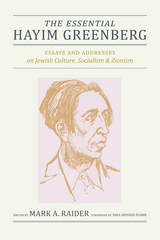 The Essential Hayim Greenberg: Essays and Addresses on Jewish Culture, Socialism, and Zionism
Hayim Greenberg, Edited and introduced by Mark Raider, Foreword by Paul Mendes-Flohr
University of Alabama Press, 2016 Though well known to many scholars and critics in the field of Judaic studies, Hayim Greenberg remains relatively unknown. Since his death in 1953, Greenberg’s contributions to modern Jewish thought have largely fallen from view. In The Essential Hayim Greenberg: Essays and Addresses on Jewish Culture, Socialism, and Zionism, the first collection of Greenberg’s writings since 1968, Mark A. Raider reestablishes Greenberg as a prominent Jewish thinker and Zionist activist who challenged the prevailing orthodoxies of American Jewry and the Zionist movement.
This collection of thoroughly annotated essays, spanning the 1920s to the early 1950s, includes Greenberg’s meditations on socialism and ethics, profiles of polarizing twentieth-century figures (among them Trotsky, Lenin, and Gandhi), and several essays investigating the compatibility of socialism and communism. Greenberg always circles back, however, to the recurring question of how Jews might situate themselves in modernity, both before and after the Holocaust, and how Labor Zionist ideology might reshape the imbalances of Jewish economic life.
Alongside his role as an American Zionist leader, Greenberg maintained a lifelong commitment to the vitality of the Jewish diaspora. Rather than promoting Jewish autonomy and statehood, he argued for fidelity to the Jewish spirit. This volume not only seeks to restore Greenberg to his previous stature in the field of Judaic studies but also to return a vital and authentic voice, long quieted, to the continuing debate over what it means to be Jewish.
The Essential Hayim Greenberg provides an accessible text for scholars, historians, and students of Jewish studies, religion, and theology.
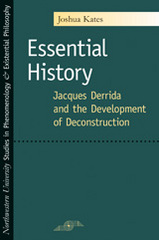 Essential History: Jacques Derrida and the Development of Deconstruction
Joshua Kates
Northwestern University Press, 2005 However widely—and differently—Jacques Derrida may be viewed as a "foundational" French thinker, the most basic questions concerning his work still remain unanswered: Is Derrida a friend of reason, or philosophy, or rather the most radical of skeptics? Are language-related themes--writing, semiosis--his central concern, or does he really write about something else? And does his thought form a system of its own, or does it primarily consist of commentaries on individual texts? This book seeks to address these questions by returning to what it claims is essential history: the development of Derrida's core thought through his engagement with Husserlian phenomenology. Joshua Kates recasts what has come to be known as the Derrida/Husserl debate, by approaching Derrida's thought historically, through its development. Based on this developmental work, Essential History culminates by offering discrete interpretations of Derrida's two book-length 1967 texts, interpretations that elucidate the until now largely opaque relation of Derrida's interest in language to his focus on philosophical concerns.
A fundamental reinterpretation of Derrida's project and the works for which he is best known, Kates's study fashions a new manner of working with the French thinker that respects the radical singularity of his thought as well as the often different aims of those he reads. Such a view is in fact "essential" if Derrida studies are to remain a vital field of scholarly inquiry, and if the humanities, more generally, are to have access to a replenishing source of living theoretical concerns.
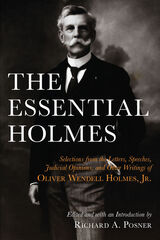 The Essential Holmes: Selections from the Letters, Speeches, Judicial Opinions, and Other Writings of Oliver Wendell Holmes, Jr.
Oliver Wendell Holmes
University of Chicago Press, 1992 Oliver Wendell Holmes, Jr., has been called the greatest jurist and legal scholar in the history of the English-speaking world. In this collection of his speeches, opinions, and letters, Richard Posner reveals the fullness of Holmes' achievements as judge, historian, philosopher, and master of English style. Thematically arranged, the volume covers a rich variety of subjects from aging and death to themes in politics, personalities, and law. Posner's substantial introduction firmly places this wealth of material in its proper biographical and historical context.
"A first-rate prose stylist, [Holmes] was perhaps the most quotable of all judges, as this ably edited volume shows."—Washington Post Book World
"Brilliantly edited, lucidly organized, and equipped with a compelling introduction by Judge Posner, [this book] is one of the finest single-volume samplers of any author's work I have seen. . . . Posner has fully captured the acrid tang of him in this masterly anthology."—Terry Teachout, National Review
"Excellent. . . . A worthwhile contribution to current American political/legal discussions."—Library Journal
"The best source for the reader who wants a first serious acquaintance with Holmes."—Thomas C. Grey, New York Review of Books
The Essential Ian McHarg: Writings on Design and Nature
Ian L. McHarg; Edited by Frederick R. Steiner
Island Press, 2006 The Essential Ian McHarg brings together a series of short essays that reveal the full range of Ian McHarg's thoughts on design and nature. Adapted from the comprehensive book of his work, To Heal the Earth, these carefully selected essays provide an ideal reader for undergraduate and graduate students in planning and landscape architecture.
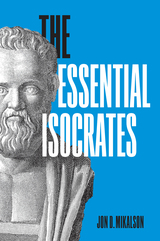 The Essential Isocrates
Jon D. Mikalson
University of Texas Press, 2022 The Essential Isocrates is a comprehensive introduction to Isocrates, one of ancient Greece’s foremost orators. Jon D. Mikalson presents Isocrates largely in his own words, with original English translations of selections of his writings on his life and times and on morality, religion, philosophy, rhetoric, education, political theory, and Greek and Athenian history. In Mikalson’s treatment, Isocrates receives his due not only as a major thinker but as one whose work has resonated across time, influencing even modern education practices and theory. Isocrates wrote extensively about Athens in the fourth century BCE and before, and his speeches, letters, and essays provide a trove of insights concerning the intellectual, political, and social currents of his time. Mikalson details what we know about Isocrates’s long, eventful, and complicated life, and much can be gleaned on the personal level from his own writings, as Isocrates was one of the most introspective authors of the Classical Period. By collecting the most representative and important passages of Isocrates’s writings, arranging them topically, and placing them in historical context, The Essential Isocrates invites general and expert readers alike to engage with one of antiquity’s most compelling men of ideas.
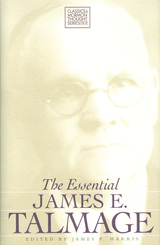 The Essential James E. Talmage
James P. Harris
Signature Books, 1997 Latter-day Saints were stunned in 1911 to learn that the interior of the Salt Lake temple had been secretly photographed and that perpetrators were demanding a $100,000 ransom for the photos. As church leaders considered their options, former University of Utah president James E. Talmage proposed that the First Presidency commission its own photos, which they did, authorizing Talmage to write his landmark House of the Lord. As the manuscript and photos were being readied for press, the presidency appointed the forty-nine-year-old educator to the Quorum of Twelve Apostles.
This was not the first time that Talmage had been of service to his church. As a geology professor, he was consulted about underground ventilation options for the Salt Lake Tabernacle and about the scientific evidence for organic evolution, which he cautiously promoted. At the church president’s request, Talmage also delivered a series of lectures on church theology which would form the basis for his later influential books.
Not that Talmage was unaccustomed to controversy. When his book, The Articles of Faith, first appeared, he was accused of “apostasy” and narrowly escaped church sanction. When he read from an advance text of Jesus the Christ in general conference, some leaders objected to the doctrinal content and had the offending paragraphs excised from the published conference proceedings.
Scholars have noted that much of Talmage’s work reflects the thinking of his day, particularly in his reliance on Frederick Farrar’s Life of Christ and in his portrayal of a so-called “Victorian Jesus.” But as James P. Harris observes, Talmage also “supplemented the biblical narrative with modern revelation” and produced “a source of information and inspiration to church members worldwide.”
The Essential James E. Talmage includes some of the apostle’s lesser-known works. For Talmage’s more popular writings, the editor has included relevant diary entries and material omitted from later editions. Readers will appreciate the process by which these seminal works were produced and the character of the man who composed them.
 The Essential Jill Johnston Reader
Jill Johnston. Edited by Clare Croft
Duke University Press, 2024 Jill Johnston began the 1960s as an influential dance columnist for the Village Voice and by the start of the next decade she was known as a keen observer of postmodern art and lesbian feminist life who challenged how dance, art, and women can and should be seen. The Essential Jill Johnston Reader collects dozens of pieces of her writing from across her career. These writings—many of which appeared in the Village Voice and the New York Times—survey the breadth of her work, braiding together her thinking, writing, and activism. From personal essays, travel writing, and artist profiles to dance and visual art reviews as well as her infamous series of columns for the Voice in which she came out as a lesbian, these pieces demonstrate the evolution of her philosophies and writing style. Illustrating how Johnston drew on lessons from dance to reconsider what it means to be a woman, this collection brings a fascinating and brilliant voice of American arts criticism, radical feminism, and gay liberation back to contemporary audiences.
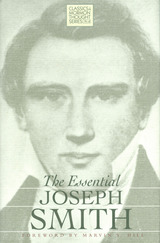 The Essential Joseph Smith
Marvin S. Hill
Signature Books, 1995 As illuminating as commentaries are, nothing conveys Joseph Smith’s character like his own unadulterated words. In his distinctive language—a mix of biblical and frontier idioms—and in his famously spontaneous humor, one can imagine him speaking and feeling the force of his charisma. Like Old Testament prophets, he was alternately contemplative and poetic, animated and surprisingly earthy.
Previous, popular editions of Smith’s speeches and writings have edited out the extemporaneous complexities, as well as any deviations from present-day doctrines. Recent academic publications, for their part, have too often camouflaged the text in scholarly apparata. By contrast, this volume brings together a sampling of the prophet’s thinking from New York to Illinois in a complete, unabridged form, utilizing the earliest known sources, without excessive footnoting or commentary. No attempt is made to harmonize disparate, conflicting ideas. Readers can trace the developing, revelatory unfolding of ideas for themselves. They can also enjoy the text without reference to any interpretative agenda. In other words, The Essential Joseph Smith is readable and reliable. Bracketed material and punctuation are added where needed, but the text otherwise speaks for itself. These are Joseph Smith’s own words, his most essential messages.
 The Essential Lapsit Guide: A Multimedia How-To-Do-It Manual and Programming Guide for Stimulating Literacy Development from 12 to 24 Months
Linda L. Ernst
American Library Association, 2015 Not just a sourcebook or a reference, but a complete multimedia guide, this innovative, comprehensive resource will help you stimulate the minds of your youngest patrons with rhymes, songs, fingerplays, books, and other creative activities. The engaging materials and methods in this book are equally useful for experienced children's librarians looking for new ideas and new librarians starting to build their own program for the very young. Through researching the latest in early learner and developmental theories, Ernst - Carefully details the physical, mental, emotional, and social development of children 12 to 24 months
- Guides you through using Lapsit programming to perform effective outreach to all segments of your community
- Shows how to build and maintain effective partnerships with caregivers, child-care providers, early childhood educators, and others
- Offers tips for seeking funding for early childhood services
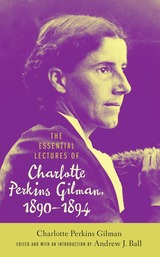 The Essential Lectures of Charlotte Perkins Gilman, 1890–1894
Charlotte Perkins Gilman Edited and with an introduction by Andrew J. Ball
University of Alabama Press, 2024 "Literary and feminist scholars will want to take a look." —Publishers Weekly
The last decades have seen a resurgence of interest in Charlotte Perkins Gilman, now considered among the most important thinkers in US history. She is best known for fiction—such as the classic short story “The Yellow Wall-Paper” (1892)—and nonfiction, including her manifesto Women and Economics (1898), a work of intersectional sociology avant la lettre. Nevertheless, as a young writer, Gilman made her living delivering lectures. One cannot know Gilman without some knowledge of this body of lectures; this book fills that critical gap in Gilman scholarship. Since the recovery of Charlotte Perkins Gilman began in the late 1960s and continued with the republication of “The Yellow Wall-Paper” in the 1970s, her image in cultural memory has been increasingly celebrated. Andrew J. Ball presents here fifty previously unpublished texts. They trace the development of Gilman’s thoughts on diverse subjects like gender, education, labor, science, theology, and politics—forming an intellectual diary of her growth. These lectures are not just a testament to Gilman’s personal evolution, but also a crucial contribution to the foundations of American sociology and philosophy. The Essential Lectures of Charlotte Perkins Gilman, 1890–1894 marks a historic moment, unveiling the hidden genius of Gilman's oratory legacy.
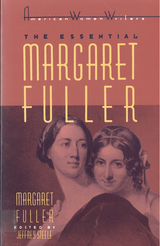 The Essential Margaret Fuller by Margaret Fuller
Steele, Jeffrey
Rutgers University Press, 1992 The leading feminist intellectual of her day, Margaret Fuller has been remembered for her groundbreaking work, Woman in the Nineteenth Century, which recharted the gender roles of nineteenth-century men and women. In this new collection, the full range of her literary career is represented from her earliest poetry to her final dispatch from revolutionary Italy. For the first time, the complete texts of Woman in the Nineteenth Century and Summer on the Lakes are printed together, along with generous selections from Fuller's Dial essays, New York essays, Italian dispatches, and unpublished journals. Special features are the complete text of Fuller's famous "Autobiographical Romance" (never before reprinted in its entirety) and nineteen of her poems, edited from her manuscripts. All of Fuller's major texts are completely annotated, with special attention to her literary and historical sources, as well as her knowledge of American Indian culture, mythology, and the Bible Jeffrey Steele's introduction provides an important revision of Fuller's biography and literary career, tracing the growth of her feminism and her development into one of America's preeminent social critics. No other writer of Fuller's day could match the range of her experience. Growing up in the world of Boston intellectuals, she was the close friend of the Alcotts, Emerson, Hawthorne, and Thoreau. But she also traveled adventurously to the western frontier, canoed down rapids with Chippewa Indians, visited the outcast and the poor in New York's institutions and prisons, and experienced the rigors of war during the bombardment of Rome. As a whole, this anthology provides the material to understand one of the most fascinating nineteenth-century American women writers.
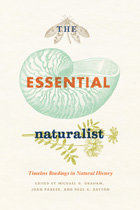 The Essential Naturalist: Timeless Readings in Natural History
Edited by Michael H. Graham, Joan Parker, and Paul K. Dayton
University of Chicago Press, 2011 Like nearly every area of scholarly inquiry today, the biological sciences are broken into increasingly narrow fields and subfields, its practitioners divided into ecologists, evolutionary biologists, taxonomists, paleontologists, and much more. But all these splintered pieces have their origins in the larger field of natural history—and in this era where climate change and relentless population growth are irrevocably altering the world around us, perhaps it’s time to step back and take a new, fresh look at the larger picture.
The Essential Naturalist offers exactly that: a wide-ranging, eclectic collection of writings from more than eight centuries of observations of the natural world, from Leeuwenhoek to E. O. Wilson, from von Humboldt to Rachel Carson. Featuring commentaries by practicing scientists that offer personal accounts of the importance of the long tradition of natural history writing to their current research, the volume serves simultaneously as an overview of the field’s long history and as an inspirational starting point for new explorations, for trained scientists and amateur enthusiasts alike.
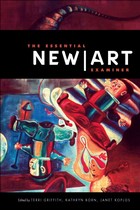 The Essential New Art Examiner
Edited by Terri Griffith, Kathryn Born, and Janet Koplos
Northern Illinois University Press, 2011
The New Art Examiner was the only successful art magazine ever to come out of Chicago. It had nearly a three-decade long run, and since its founding in 1974 by Jane Addams Allen and Derek Guthrie, no art periodical published in the Windy City has lasted longer or has achieved the critical mass of readers and admirers that it did. The Essential New Art Examiner gathers the most
memorable and celebrated articles from this seminal publication. First a newspaper, then a magazine, the New Art Examiner succeeded unlike no other periodical of its time. Before the word “blog” was ever spoken, it was the source of news and information for Chicago-area artists. And as its reputation grew, the New Art Examiner gained a national audience and exercised influence far beyond the Midwest. As one critic put it, “it fought beyond its weight class.”
The articles in The Essential New Art Examiner are organized chronologically. Each section of the
book begins with a new essay by the original editor of the pieces therein that reconsiders the era and larger issues at play in the art world when they were first published. The result is a fascinating portrait of the individuals who ran the New Art Examiner and an inside look at the artistic trends
and aesthetic agendas that guided it. Derek Guthrie and Jane Addams Allen, for instance, had their own renegade style. James Yood never shied away from a good fight. And Ann Wiens was heralded for embracing technologies and design. The story of the New Art Examiner is the story of a constantly evolving publication, shaped by talented editors and the times in which it was printed.
Now, more than three decades after the journal’s founding, The Essential New Art Examiner brings together the best examples of this groundbreaking publication: great editing, great writing, a feisty staff who changed and adapted as circumstances dictated—a publication that rolled with the times
and the art of the times. With passion, insight, and editorial brilliance, the staff of the New Art Examiner turned a local magazine into a national institution.
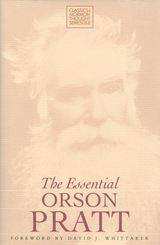 The Essential Orson Pratt
David J. Whittaker
Signature Books, 1991 The author of several dozen seminal treatises on Mormon doctrine, Orson Pratt (1811-81) produced a library of spirited and thoughtful expositions and defenses of the LDS church that charted the course for all subsequent church theologians.
Born in Henderson, New York, Pratt was a contemporary of Joseph Smith, who, like his successor Brigham Young, often depended on Pratt’s rhetorical skills and scientific eclecticism in presenting the Mormon message to the outside world. Since Pratt was a member of the leading Quorum of Twelve Apostles, many of his works were published in pamphlet form for proselytizing purposes. His rudimentary mathematical talents were also relied on to help navigate the first party of pioneers to the Great Salt Lake Valley. He was the first Mormon to enter the valley—three days before Young.
A stubborn and fiercely independent intellectual, Pratt also clashed with Smith over polygamy and with Young over the nature of God and the origin of the soul. Their arguments eventually led Young in 1875 to demote him within the quorum, reducing his chances of succeeding to the church presidency. Pratt suffered from diabetes, and his final years were plagued by illness. He died in Utah at the age of seventy. Nevertheless, his influence has continued.
Pratt was the first to write and publish an account of Smith’s famous “first vision,” and he authored one of the earliest confessions of Mormon doctrine, which Smith later used in composing his own “Articles of Faith.” Pratt edited the Latter-day Saints’ Millennial Star, The New York Messenger, The Seer, and The Prophetic Almanac, the latter consisting of astrological observations, folk wisdom, theological essays, and one of the first LDS statements that humans could become gods.
Pratt’s most controversial speculation was that atoms, then thought to be indestructible and indivisible, were intelligent, self-conscious, sentient, self-propelled particles which bonded together to form colonies in the shape of plants, minerals, animals, humans, and gods, and which were tutored over time in the “great school of the universe.” His writing was thus a unique blend of biblical and pseudo-scientific philosophy. Twentieth-century reprints of his works have tended to overlook his more controversial ideas and emphasized the less radical ones. In the present compilation, care has been taken to remain faithful to the originals, leaving nothing out.
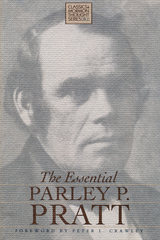 The Essential Parley P. Pratt
Peter L. Crawley
Signature Books, 1990 One of the first converts to the LDS church, Parley Parker Pratt (1807-57) would eventually become early Mormonism’s most famous and widely published defender. Born in western New York, he converted to Mormonism in late 1830 and was called to the Quorum of Twelve Apostles five years later as one of its founding members. He was strong-willed and largely self-educated, as his vitae reflects: he served several missions for the church; participated in Zion’s Camp, the militia which marched to Missouri to rescue threatened church members; quarreled with Joseph Smith over finances and narrowly escaped excommunication; founded the Latter-day Saints’ Millennial Starin England; married several plural wives in Nauvoo, Illinois; immigrated to the Great Salt Lake valley; and continued to fill additional overseas missions.
Best known for his fiery apologetic writings such as A Voice of Warning (1837), Key to the Science of Theology (1855), and for his autobiography which was published posthumously in 1874 by his son, who wrote most of it, Pratt nevertheless defined Mormon doctrine and theology for much of the nineteenth century. He was killed in 1857 in Arkansas by the estranged husband of one of his polygamous wives. The husband, an outsider, did not share Pratt’s and other Mormons’ contempt for civil authority over marriage.
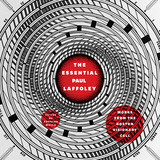 The Essential Paul Laffoley: Works from the Boston Visionary Cell
Paul Laffoley
University of Chicago Press, 2016 Paul Laffoley, who once worked for Frederick Kiesler and Andy Warhol, emerged in recent years as one of the leading visionary artists of our time. Lavishly illustrated, The Essential Paul Laffoley documents the evolution of his unique intellectual, spiritual, and artistic approaches.
Living and working in a tiny space in Boston he called the “Boston Visionary Cell,” Laffoley became best known for his large mandala-like paintings filled with symbols and texts. Their titles range from the paranormal and arcane, such as The Ectoplasmic Man and The Sexuality of Robots, to the organic, as with Das Urpflanze Haus, to the erudite, including De Rerum Natura, a reference to the Roman poet Lucretius. Whether focused on working with plants to create living architecture or centered on the process of alchemy, these detailed, brilliantly colored works reflect Laffoley’s utopian hopes and transdisciplinary interests: throughout, he aimed to unite the boundless freedom of human imagination with the mathematical precision of the physical world.
Nearly one hundred of Laffoley’s works are showcased here along with his accompanying “thought-forms,” texts specific to each painting that comment on its particular content. Together with an introduction by editor and gallerist Douglas Walla, a biography by fellow artist Steven Moskowitz, and essays by scholars Linda Dalrymple Henderson and Arielle Saiber, this book is a long-awaited celebration of the theories, writings, and artworks of an extraordinary mind.
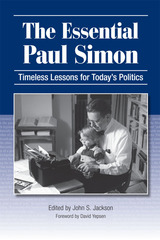 The Essential Paul Simon: Timeless Lessons for Today's Politics
Edited by John S. Jackson. Foreword by David Yepsen
Southern Illinois University Press, 2012 One of the most admired public figures in Illinois’s history, journalist and politician Paul Simon dedicated his life to public service for more than four decades. During his lengthy and productive career, he often used his prolific writings as tools to establish a straightforward dialogue with his constituents. In The Essential Paul Simon: Timeless Lessons for Today’s Politics, editor John S. Jackson carefully selects the best of Simon’s decades of writings, which include newspaper columns, editorials, book chapters, and newsletters—works that, while written to address the challenges of Simon’s own era, still resonate with practical wisdom today. Jackson provides an introduction to each chapter, setting Senator Simon’s work into the context of its time and emphasizing the connection to today’s continuing political questions and conflicts. He also contributes an annotated bibliography covering all of Paul Simon’s twenty-two books which will prove to be a handy guide to Simon’s publications.
While Simon covered a broad spectrum of topics in his written works, his mission throughout the years remained the same: to urge his constituents to study and understand issues that affected their daily lives and to make the complexities of politics accessible to the average citizen. An indispensable volume for voters and politicians alike, The Essential Paul Simon compiles some of the most thought-provoking writings from one of the keenest political minds in our nation’s history. Years after their publication, Simon’s eloquent and energetic conversations continue to provide witty, informative guidance through the maze of American politics and inspire the development of spirited public discussion and debate.
Certificate of Excellence from the Illinois State Historical Society, 2013
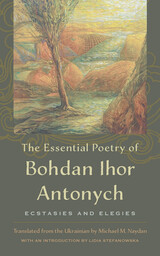 The Essential Poetry of Bohdan Ihor Antonych: Ecstasies and Elegies
Bohdan Ihor Antonych (1909-1937)
Bucknell University Press, 2024 Lemko-Ukrainian poet Bohdan Ihor Antonych (1909-37) is not as well-known as Slavic modernist poets Mandelstam, Pasternak, and Milosz, or their Western European counterparts Eliot, Rilke, and Lorca, but he unquestionably should be. Sometimes compared to Walt Whitman and Dylan Thomas, Antonych, who described himself as “an ecstatic pagan, a poet of the high of spring,” created during his brief lifetime powerful and innovative poetry with astonishing metaphorical constructions. Born in the Lemko region of Poland, Antonych adopted Ukrainian as his literary language when he moved to Lviv, and virtually transformed the Ukrainian poetic landscape. This essential collection introduces Antonych’s work to new audiences, and includes a biographical sketch by the translator and a comprehensive introduction by Lidia Stefanowska, one of the world’s leading experts on this remarkable poet.
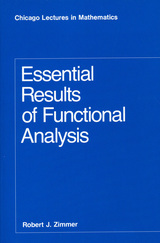 Essential Results of Functional Analysis
Robert J. Zimmer
University of Chicago Press, 1990 Functional analysis is a broad mathematical area with strong connections to many domains within mathematics and physics. This book, based on a first-year graduate course taught by Robert J. Zimmer at the University of Chicago, is a complete, concise presentation of fundamental ideas and theorems of functional analysis. It introduces essential notions and results from many areas of mathematics to which functional analysis makes important contributions, and it demonstrates the unity of perspective and technique made possible by the functional analytic approach.
Zimmer provides an introductory chapter summarizing measure theory and the elementary theory of Banach and Hilbert spaces, followed by a discussion of various examples of topological vector spaces, seminorms defining them, and natural classes of linear operators. He then presents basic results for a wide range of topics: convexity and fixed point theorems, compact operators, compact groups and their representations, spectral theory of bounded operators, ergodic theory, commutative C*-algebras, Fourier transforms, Sobolev embedding theorems, distributions, and elliptic differential operators. In treating all of these topics, Zimmer's emphasis is not on the development of all related machinery or on encyclopedic coverage but rather on the direct, complete presentation of central theorems and the structural framework and examples needed to understand them. Sets of exercises are included at the end of each chapter.
For graduate students and researchers in mathematics who have mastered elementary analysis, this book is an entrée and reference to the full range of theory and applications in which functional analysis plays a part. For physics students and researchers interested in these topics, the lectures supply a thorough mathematical grounding.
 The Essential Senghor: African Philosophy and Black Aesthetics
Léopold Sédar Senghor. Edited and Translated by Doyle D. Calhoun, Alioune B. Fall, and Cheikh Thiam.
Duke University Press, 2026 Senegalese poet, philosopher, and politician Leopold Sédar Senghor, together with Aimé Césaire and others, developed the influential and perennially relevant negritude movement—a Black artistic, philosophical, and political expression of Black presence in the modern colonial world. The Essential Senghor provides a new opportunity for English-language readers to engage with Senghor’s critical and philosophical writings spanning from 1937 to 1985. This collection includes Senghor’s key philosophical interventions in discourses on freedom, Blackness and being, humanism, history, and more. It portrays Senghor as a pivotal intellectual in the fields of African and Black studies whose work engages a wide range of disciplines, including literature, linguistics, anthropology, religion, and art history. The Essential Senghor invites readers not only to reflect on negritude and its importance for our political present, but also to reconsider intellectual genealogies of decolonial thought, Black liberation, and African philosophy.
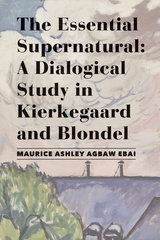 The Essential Supernatural: A Dialogical Study in Kierkegaard and Blondel
Maurice Ashley Agbaw-Ebai
St. Augustine's Press, 2022 Søren Kirkegaard and Maurice Blondel are positioned together in a dialogue regarding the vision of the supernatural. Maurice Ashley Agbaw-Ebai draws from this a sharper image of the preeminent place religious experience possesses in human life and thought. Kirkegaard's lament of Christian lack of fervor and Blondel's concern that religion and philosophy no longer interact are both examined and Agbaw-Ebai concludes that they both indicate the same outcome: a "dominant leveling of society" that robs religion of its particularity. This devastates the individual because he is no longer challenged to seek a relationship with God and expose himself to the supernatural. The boundlessness of man must be acknowledged or else his actions will never be understood, and religious experience and philosophy must coexist with mutual reference or self-knowledge will never amount to the discovery of supernatural destiny. And this, asserts Agbaw-Ebai, is the shared urgency of both Kirkegaard and Blondel.
Like these philosophers who have preceded him, Agbaw-Ebai exhorts us to never allow the sense of our relation to the supernatural as a settled matter. The philosophy of religion we have inherited does not protect us from having to confront our own subjectivity with autonomy: to be God without God and against God, or to be God with and through God.
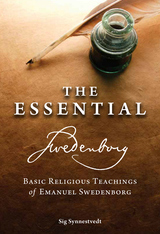 The Essential Swedenborg: Basic Religious Teachings of Emanuel Swedenborg
Emanuel Swedenborg
Swedenborg Foundation Publishers, 2023 The Essential Swedenborg summarizes in modern terms the basic features of the theology put forward by Emanuel Swedenborg (1688–1772), scientist, inventor, statesman, philosopher, and theologian.
The startling concepts of the “Northern Plato” caused the orthodox clergy of the time to consider him a heretic. For more than two hundred years, however, Swedenborg has inspired many of the world’s greatest intellects and contributors to modern culture—Balzac, Elizabeth Barrett Browning, Blake, Emerson, Henry James, Sr., Czeslaw Milosz, and Yates among them—with a visionary belief system for all people, regardless of background, that emphasizes good works, personal responsibility, and one’s inner connection to divine love.
This edition provides new translations of selections from Swedenborg’s works on some of his key theological topics, including use, charity, life after death, the destiny of humanity, and divine providence.
 The Essential Tagore
Rabindranath Tagore
Harvard University Press, 2011 The Essential Tagore showcases the genius of India’s Rabindranath Tagore, the first Asian Nobel Laureate and possibly the most prolific and diverse serious writer the world has ever known.
Marking the 150th anniversary of Tagore’s birth, this ambitious collection—the largest single volume of his work available in English—attempts to represent his extraordinary achievements in ten genres: poetry, songs, autobiographical works, letters, travel writings, prose, novels, short stories, humorous pieces, and plays. In addition to the newest translations in the modern idiom, it includes a sampling of works originally composed in English, his translations of his own works, three poems omitted from the published version of the English Gitanjali, and examples of his artwork.
Tagore’s writings are notable for their variety and innovation. His Sonar Tari signaled a distinctive turn toward the symbolic in Bengali poetry. “The Lord of Life,” from his collection Chitra, created controversy around his very personal concept of religion. Chokher Bali marked a decisive moment in the history of the Bengali novel because of the way it delved into the minds of men and women. The skits in Vyangakautuk mocked upper-class pretensions. Prose pieces such as “The Problem and the Cure” were lauded by nationalists, who also sang Tagore’s patriotic songs.
Translations for this volume were contributed by Tagore specialists and writers of international stature, including Amitav Ghosh, Amit Chaudhuri, and Sunetra Gupta.
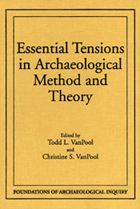 Essential Tensions in Archaeological Method and Theory
Todd L. Vanpool
University of Utah Press, 2003 Archaeological theory, some say, seems to have fragmented into a thousand fundamentalisms. By working on a broader set of empirical issues than ever before, archaeologists are indeed applying and refining a variety of perspectives. Yet the editors of this volume make a case that it is appropriate for archaeologists to use a logical variety of theoretical structures to answer different kinds of questions, combining approaches as necessary.
In that spirit of plurality, contributors to this volume identify an important theoretical or methodological problem and present an argument regarding its solution. They also provide a critical evaluation of the current state of archaeological method and theory, illustrating that such recurrent issues as the role of agency and the importance of social considerations in the formation of archaeological research dominate current theoretical development.
By presenting both the range of important questions and a variety of answers, this volume contributes to the 'essential tension' that will further the growth of archaeological theory.
The Essential Tillich
Paul Tillich
University of Chicago Press, 1999 "With this volume, Paul Tillich joins the ranks of the great Christian theologians such as Augustine of Hippo and Thomas Aquinas. . . .This volume, compiled by a noted minister and scholar, offers to the theological student, church worker, or, indeed, any serious reader struggling with the existential question, a tantalizing and illuminating introduction to perhaps the greatest mind of twentieth-century Protestant theology."—Booklist
"Church testifies to the power Tillich provides him for his pastoral work, his intellectual formulation and his personal life. He projects, quite properly, that the 'essential' Tillich can do the same for others. . . ."—Christian Century
"This book summarizes in Tillich's own words much of the best of his thought, still highly relevant today."—Library Journal
"[Church] helps Tillich speak to an audience unfamiliar with the breadth and depth of his thought."—Religious Studies Review
 Essential Trade: Vietnamese Women in a Changing Marketplace
Ann Marie Leshkowich
University of Hawaii Press, 2014 “My husband doesn’t have a head for business,” complained Ngoc, the owner of a children’s clothing stall in Ben Thanh market. “Naturally, it’s because he’s a man.” When the women who sell in Ho Chi Minh City’s iconic marketplace speak, their language suggests that activity in the market is shaped by timeless, essential truths: Vietnamese women are naturally adept at buying and selling, while men are not; Vietnamese prefer to do business with family members or through social contacts; stallholders are by nature superstitious; marketplace trading is by definition a small-scale enterprise.
Essential Trade looks through the façade of these “timeless truths” and finds active participants in a political economy of appearances: traders’ words and actions conform to stereotypes of themselves as poor, weak women in order to clinch sales, manage creditors, and protect themselves from accusations of being greedy, corrupt, or “bourgeois” – even as they quietly slip into southern Vietnam’s growing middle class. But Leshkowich argues that we should not dismiss the traders’ self-disparaging words simply because of their essentialist logic. In Bến Thành market, performing certain styles of femininity, kinship relations, social networks, spirituality, and class allowed traders to portray themselves as particular kinds of people who had the capacity to act in volatile political and economic circumstances. When so much seems to be changing, a claim that certain things or people are inherently or naturally a particular way can be both personally meaningful and strategically advantageous.
Based on ethnographic fieldwork and life history interviewing conducted over nearly two decades, Essential Trade explores how women cloth and clothing traders like Ngọc have plied their wares through four decades of political and economic transformation: civil war, postwar economic restructuring, socialist cooperativization, and the frenetic competition of market socialism. With close attention to daily activities and life narratives, this groundbreaking work of critical feminist economic anthropology combines theoretical insight, vivid ethnography, and moving personal stories to illuminate how the interaction between gender and class has shaped people’s lives and created market socialist political economy. It provides a compelling account of postwar southern Vietnam as seen through the eyes of the dynamic women who have navigated forty years of profound change while building their businesses in the stalls of Bến Thành market.
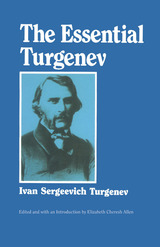 Essential Turgenev
Ivan Sergeevich Turgenev
Northwestern University Press, 1994 The Essential Turgenev will provide American readers with the first comprehensive, portable edition of this great Russian author's works. It offers an extensive introduction to the writings that established Turgenev as one of the preeminent literary figures of his time, and reveals the breadth of insight into changing social conditions that made Turgenev a portal to Russian intellectual life.
Readers will find complete, exemplary translations of Turgenev's finest novels, Rudin, A Nest of Gentry, and Fathers and Sons, along with the lapidary novella First Love. The volume also includes selections from Sportsman's Sketches, seven of Turgenev's most compelling short stories, and fifteen prose poems. It also contains samples of the author's nonfiction drawn from autobiographical sketches, memoirs, public speeches, plus the influential essay "Hamlet and Don Quixote" and correspondence with Dostoevsky, Tolstoy, and others.
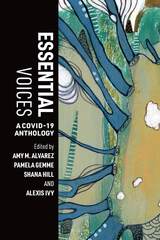 Essential Voices: A COVID-19 Anthology
Amy M. Alvarez
West Virginia University Press, 2023 A collection of creative writing and art about COVID-19 at the onset of the pandemic by people from vulnerable populations.
Bringing together artwork, creative nonfiction, fiction, and poetry, Essential Voices shares the perspectives of people from vulnerable populations as they were affected by COVID-19 in 2020, before the release of the vaccine. The pieces in this volume represent a range of writers and artists, some from international locations, whose work may be less likely to be seen because of race, ethnicity, or current legal status. Contributors include individuals who identify as BIPOC, LGBTQIA+, or seniors; those who are immunocompromised or undocumented; those working in medicine, food service, factories, and sanitation; and parents who were unable to work from home, along with individuals who were being held in correctional facilities or facing mental health concerns. This multigenre collection preserves the history of the pandemic by documenting and publishing these essential voices. Essential Voices will be of interest to readers who want to consider the diverse lived experiences of people during the pandemic when outcomes were most uncertain. It will also be useful for teachers, students, activists, and policy makers in a variety of settings, including government, hospitals, prisons, homeless shelters, colleges, art schools, and secondary schools.
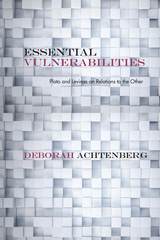 Essential Vulnerabilities: Plato and Levinas on Relations to the Other
Deborah Achtenberg
Northwestern University Press, 2014 In Essential Vulnerabilities, Deborah Achtenberg contests Emmanuel Levinas’s idea that Plato is a philosopher of freedom for whom thought is a return to the self. Instead, Plato, like Levinas, is a philosopher of the other. Nonetheless, Achtenberg argues, Plato and Levinas are different. Though they share the view that human beings are essentially vulnerable and essentially in relation to others, they conceive human vulnerability and responsiveness differently. For Plato, when we see beautiful others, we are overwhelmed by the beauty of what is, by the vision of eternal form. For Levinas, we are disrupted by the newness, foreignness, or singularity of the other. The other, for him, is new or foreign, not eternal. The other is unknowable singularity. By showing these similarities and differences, Achtenberg resituates Plato in relation to Levinas and opens up two contrasting ways that self is essentially in relation to others.
 The Essential Wayne Booth
Wayne C. Booth
University of Chicago Press, 2006 Wayne Booth wrote some of the most influential and engaging criticism of our time, most notably the 1961 classic The Rhetoric of Fiction, a book that transformed literary criticism and became the standard reference point for advanced discussions of how fiction works, how authors make novels accessible, and how readers re-create texts.
While Booth’s work was formative to the study of literature, his essential writings have never been collected in a single volume—until now. Selected by Walter Jost in collaboration with Booth himself, the texts anthologized here present a picture of this indispensable critic’s contributions to literary and rhetorical studies. The selections range from memorable readings of Macbeth, Jane Austen, George Eliot, and Henry James to engagements with Booth’s intellectual heroes, such as Richard McKeon and Mikhail Bakhtin. But rhetoric, Booth’s abiding concern as a critic and thinker, provides the organizing principle of the anthology. The Essential Wayne Booth illuminates the scope of Booth’s rhetorical inquiry: the entire range of resources that human beings share for producing effects on one another. Whether about metaphors for our friendship with books or the two cultures of science and religion, the texts collected here always return to the techniques and ethics of our ways of communicating with each other—that is, to rhetoric.
The Essential Wayne Booth is a capstone to Booth's long career and an eloquent reminder of the ways in which criticism can make us alive to the arts of writing, talking, and listening.
The Essential Worldwide Laws of Life
Sir John Templeton
Templeton Press, 2012 What does it mean to live a good life? The major scriptures of the world, various schools of philosophical thought, storytellers, scientists, artists, and historians have all offered answers to this question. Surprisingly, these answers are common among nearly all sources. Famed investor and philanthropist Sir John Templeton called these commonalities the “laws of life.” Templeton gathers the best of these teachings in The Essential Worldwide Laws of Life. This handsome volume shows readers of all ages, from all parts of the world, how to make their lives more joyous and useful by learning the universal truths that transcend time and culture. Each law is presented in an essay format, with stories, commentary, and quotations to illustrate its importance. The material is designed to inspire the reader to put these laws into practice and to enjoy the rewarding life that will result.
Essentials of Electromagnetic Compatibility Engineering
Randy J. Jost
The Institution of Engineering and Technology, 2016 Electromagnetic compatibility (EMC) engineering has grown rapidly as a field as systems have become smaller. More compact systems have resulted in increased interference and leakage problems, thus making it almost every design engineer's mission to seek and eliminate EMC-related problems before production commences.
Essentials of English Grammar
Otto Jespersen
University of Alabama Press, 1964 A classic of English grammar, Essentials of English Grammar provides a common ground for the traditionalist and the structural or descriptive linguist. Jespersen’s work provides insight into the fundamental concepts that underlie the linguistic approach, but at the same time the foundation of the traditional approach is retained.
Essentials of Italian Grammar
Joseph Lloyd Battista
Harvard University Press A compact and systematic digest of the fundamental principles of Italian grammar, with eighteen topical exercises covering those particular forms that are indispensable for early reading. Though intended primarily for graduate students and for all those whose chief desire is to acquire a reading knowledge of Italian, this little book can be used to equal advantage as a review grammar, or as a beginning grammar in the first year's course for colleges.
 Essentials of MMPI-2 and MMPI-A Interpretation
James N. Butcher
University of Minnesota Press, 2000 The best resource for interpreting these widely used personality assessment tests. The best resource for interpreting these widely used personality assessment tests. Essentials of MMPI-2 and MMPI-A Interpretation presents innovative interpretive strategies for both the Minnesota Multiphasic Personality Inventory-2, or MMPI-2, and the adaptation for adolescents, the MMPI-A. James N. Butcher and Carolyn L. Williams detail the rationale for the revision and development of the instruments and their scales, and describe how to administer, score, profile, code, and interpret the tests.The revised edition includes the most recent MMPI research, including new information on ethnic background and cultural setting as they relate to assessment. Focusing primarily on studies of profile validity and external correlates, the revision also includes interpretive guidelines for several scales that will be introduced into the MMPI tests in 2000.Translation inquiries: University of Minnesota Press
Essentials of Non-linear Control Theory
J.R. Leigh
The Institution of Engineering and Technology, 1983 The book is concerned with understanding the structure of nonlinear dynamic systems within a control engineering context After a discussion of theoretical foundations, the development moves to specific techniques (describing function method, phase plane portrait, linearisation methods). The treatment then becomes oriented to qualitative analysis and maintains this emphasis to the end of the book. The broad aim is to develop methods that will allow the topology of system behaviour to be visualised. The main tools are Lyapunov methods, extending to include recent work on system decomposition. A bibliography lists both earlier seminal and recent literature to allow the reader to follow up particular aspects.
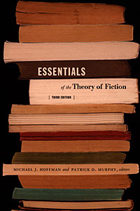 Essentials of the Theory of Fiction
Michael J. Hoffman and Patrick D. Murphy, eds.
Duke University Press, 2005 What accounts for the power of stories to both entertain and illuminate? This question has long compelled the attention of storytellers and students of literature alike, and over the past several decades it has opened up broader dialogues about the nature of culture and interpretation. This third edition of the bestselling Essentials of the Theory of Fiction provides a comprehensive view of the theory of fiction from the nineteenth century through modernism and postmodernism to the present. It offers a sample of major theories of fictional technique while emphasizing recent developments in literary criticism. The essays cover a variety of topics, including voice, point of view, narration, sequencing, gender, and race. Ten new selections address issues such as oral memory in African American fiction, temporality, queer theory, magical realism, interactive narratives, and the effect of virtual technologies on literature. For students and generalists alike, Essentials of the Theory of Fiction is an invaluable resource for understanding how fiction works. Contributors. M. M. Bakhtin, John Barth, Roland Barthes, Wayne Booth, John Brenkman, Peter Brooks, Catherine Burgass, Seymour Chatman, J. Yellowlees Douglas, Rachel Blau DuPlessis, Wendy B. Faris, Barbara Foley, E. M. Forster, Joseph Frank, Joanne S. Frye, William H. Gass, Henry Louis Gates Jr., Gérard Genette, Ursula K. Heise, Michael J. Hoffman, Linda Hutcheon, Henry James, Susan S. Lanser, Helen Lock, Georg Lukács, Patrick D. Murphy, Ruth Ronen, Joseph Tabbi, Jon Thiem, Tzvetan Todorov, Virginia Woolf
 Essentials of the Theory of Fiction, 2nd ed.
Michael J. Hoffman and Patrick D. Murphy, eds.
Duke University Press, 1996 This second edition of Essentials of the Theory of Fiction provides a comprehensive view of the theory of fiction from the nineteenth century, through modernism and postmodernism, to the present. Expanded and revised, it has new selections from contemporary theorists, including Henry Louis Gates Jr., Peter Brooks, Linda Hutcheon, David Lodge, Barbara Foley, and others. Selections from: M. M. Bakhtin, John Barth, Roland Barthes, Wayne Booth, Peter Brooks, Seymour Chatman, Rachel Blau DuPlessis, Suzanne C. Ferguson, Barbara Foley, E. M. Forster, Joseph Frank, William Freedman, Norman Friedman, Joanne S. Frye, William H. Gass, Henry Louis Gates Jr., Gérard Genette, J. Arthur Honeywell, Linda Hutcheon, Henry James, Susan S. Lanser, Mitchell A. Leaska, George Levine, David Lodge, Georg Lukács, Gerald Prince, Patrocinio P. Schweickart, Tzvetan Todorov, Lionel Trilling, and Virginia Woolf
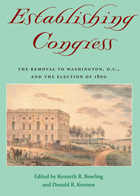 Establishing Congress: The Removal to Washington, D.C., and the Election of 1800
Kenneth R. Bowling
Ohio University Press, 2005 Establishing Congress: The Removal to Washington, D.C., and the Election of 1800 focuses on the end of the 1790s, when, in rapid succession, George Washington died, the federal government moved to Washington, D.C., and the election of 1800 put Thomas Jefferson and the Democratic-Republican Party in charge of the federal government.
Establishing Congress dispels the myths and misinformation that surround the federal government’s move to Washington and demonstrates that the election of 1800 changed American party politics forever, establishing the success of the American experiment in government and completing the founding of the Republic. It also contends that the lame-duck session of Congress had far-reaching implications for the governance of the District of Columbia. Later chapters examine aspects of the political iconography of the Capitol—one illuminating Jefferson’s role in turning the building into a temple for the legislature and an instrument for nation-building, another analyzing the fascinating decades-long debate over whether to bury George Washington in the Capitol.
The book considers as well the political implications of social life in early Washington, examining the political lobbying by Washington women within a social context and detailing the social and political life in the city’s homes, hotels, boardinghouses, and eating messes. Establishing Congress is an invaluable reference work for anyone interested in these pivotal moments in American history.
 Establishing Congress: The Removal to Washington, D.C., and the Election of 1800
Kenneth R. Bowling
Ohio University Press, 2005 Establishing Congress: The Removal to Washington, D.C., and the Election of 1800 focuses on the end of the 1790s, when, in rapid succession, George Washington died, the federal government moved to Washington, D.C., and the election of 1800 put Thomas Jefferson and the Democratic-Republican Party in charge of the federal government.
Establishing Congress dispels the myths and misinformation that surround the federal government’s move to Washington and demonstrates that the election of 1800 changed American party politics forever, establishing the success of the American experiment in government and completing the founding of the Republic. It also contends that the lame-duck session of Congress had far-reaching implications for the governance of the District of Columbia. Later chapters examine aspects of the political iconography of the Capitol—one illuminating Jefferson’s role in turning the building into a temple for the legislature and an instrument for nation-building, another analyzing the fascinating decades-long debate over whether to bury George Washington in the Capitol.
The book considers as well the political implications of social life in early Washington, examining the political lobbying by Washington women within a social context and detailing the social and political life in the city’s homes, hotels, boardinghouses, and eating messes. Establishing Congress is an invaluable reference work for anyone interested in these pivotal moments in American history.
Establishment and Meritocracy
Peter Hennessy
Haus Publishing, 2014 Like so many of the postwar generation in Britain, Peter Hennessy climbed the ladders of opportunity set up by the 1944 Education Act designed to encourage a more meritocratic society. In this highly personal book, Hennessy examines the rise of meritocracy as a concept and the persistence of the shadowy notion of an establishment in Britain’s institutions of state. He asks whether these elusive concepts still have any power to explain British society, and why they continue to fascinate us. To what extent are the ideas of meritocracy and the establishment simply imagined? And if a meritocracy rose in the years following 1945, has it now stalled?
With its penetrating examination of the British school system and postwar trends, Establishment and Meritocracy is an important resource for those concerned about the link between education and later success, both for individuals and their societies.
 The Establishment of Science in America: 150 Years of the American Association for the Advancement of Science
Edited by Sally Gregory Kohlstedt, Michael M. Sokal, and Bruce V. Lewenstein
Rutgers University Press, 1999 This comprehensive history of the American Association for the Advancement of Science (AAAS), the largest and most significant general organization of scientists in America, provides a unique window on the development of science in the United States during the past 150 years. The Establishment of Science in America traces the evolution of the role of scientists in American society, public attitudes toward science, and the changing dimensions of the sponsorship of science and its participants. The essays by three distinguished authors connect the AAAS history to issues of continuing importance in American history, such as the integration of women and minority groups into mainstream professions and the role of expert knowledge in a democratic society. The volume divides the history of the AAAS into three parts: Creating a Forum for Science in the Nineteenth Century; Promoting Science in a New Century: The Middle Years of the AAAS; and Shifting Science from People to Programs: AAAS in the Postwar Years.
 Estado Vegetal: Performance and Plant-Thinking
Giovanni Aloi
University of Minnesota Press, 2023 Interdisciplinary essays on Manuela Infante’s award-winning play explore the relationship between critical plant studies and performance art in the Anthropocene Since its first staging in 2016, Estado Vegetal, Manuela Infante’s riveting piece of experimental performance art, has expanded philosophical thinking into a fully-fledged artistic inquiry of nonanthropocentric being. Through Infante’s polyvocal monologue, acted with impetus by Marcela Salinas, plants are charged with an agency capable of uprooting culturally grounded conceptions of the world in the face of incommensurable trauma and loss. This first book dedicated to Infante’s plant-focused performance features eight essays by scholars, poets, and artists whose practices draw from research fields as disparate as new materialism, anthropogenic feminism, queer studies, and speculative realism. Including an interview with Infante, the full playscript, and stills from the performance, Estado Vegetal: Performance and Plant-Thinking reveals the roles that plants in art can play in productively reconfiguring human–nonhuman relations within current anthropogenic perspectives. Infante’s performance is a perfect case study and reference point for anyone interested in exploring the complexities of plant-thinking through alternative and experimental avenues. Furthermore, this book is at once a critical plant studies primer and an artistic problematization of the philosophical questions that have been central to the latest multidisciplinary discussions on plant-being. Contributors: Maaike Bleeker, Utrecht U; Lucy Cotter, Portland State U; Prudence Gibson, UNSW Sydney; Michael Marder, U of the Basque Country; Dawn Sanders, U of Gothenburg; Catriona Sandilands, York U; Sibila Sotomayor Van Rysseghem, colectivo LASTESIS; Mandy-Suzanne Wong.
Estate Sale
Dan Murphy
University of Utah Press, 2025 Winner of the Agha Shahid Ali Prize in Poetry
In a house full of stanzas found in Estate Sale, Dan Murphy opens the door on the objects of his life: accumulated experience and imagination, trauma, personal and political history, inheritances that subtly unearth the forces of the world. Loss becomes a possession, language an act of reclamation, and form appears as the wearing of a dead man’s clothes. One poem reminds us “that things exist, even when out of sight.” In these poems, meaning is found, then, in the search for meaning, refuge in the search for refuge.
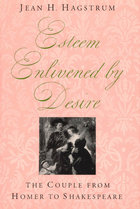 Esteem Enlivened by Desire: The Couple from Homer to Shakespeare
Jean H. Hagstrum
University of Chicago Press, 1992 A magisterial book by one of our most distinguished literary historians, Esteem Enlivened by Desire illuminates (and celebrates) the ideal of lasting love from antiquity to the high Renaissance. Love that leads to marriage is a relatively recent "invention," or so critics and historians often say. But in this remarkable survey, Jean H. Hagstrum argues that long-term commitment formed of friendship and passion is one of Western culture's oldest and richest concepts.
Hagstrum looks mainly at depictions of love in art and literature, works of the imagination that reflect social reality but also often transcend it to challenge restrictive codes and open up new possibilities for human nature. Among these possibilities, the association of esteem with sexual desire is one of the most invigorating that artists and thinkers have ever addressed. Tracing this motif through many different kinds of expression—from the Homeric epics, the Oresteia, Augustine's Confessions to the stories of Ovid, the Decameron, the plays and sonnets of Shakespeare—Hagstrum also illuminates a number of related themes, including other forms of relationship, from friendship to lust; marriage for political ends; liaisons with the same sex; and the presence of passion in religious commitment.
The culmination of Hagstrum's long career, Esteem Enlivened by Desire offers generous insight into the amorous heritage of the West—and honors one of its most important, enduring, and hard-won achievements.
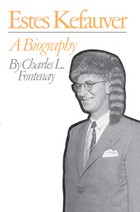 Estes Kefauver: A Biography
Charles L. Fontenay
University of Tennessee Press, 2002 Reviewed in the United States on December 14, 2009
In the 1950s and early 1960s, Estes Kefauver was everywhere in politics and government. He ran for president twice, was the 1956 Democratic Vice Presidential nominee, pioneered the use of television in Congressional hearings, and dug deep into many policy areas in the US Senate. Most students of politics or government have seen Kefauver's name, but there is surprisingly little comprehensive treatment of him as an individual and not as a part of a broader campaign, Senate history, or legislation. Charles Fortenay spent years trying to correct this vacancy in political biography. Fortenay's effort began during Kefauver's life, but took twenty-five years to get published and not in the form Fontenay had originally imagined.
But the product is a good one. Fontenay takes us from Kefauver's childhood in Tennessee, to his law career, to his service in the US House, to his campaign for the Senate, his pursuit of the presidency in the 1950s, and his legislative battles up to his early death in 1963. In doing so, Fortenay shows us the many paradoxes of Kefauver. Kefauver was a hard working, not particularly charismatic legislator. But he was also a great retail politician, embarrassing Harry Truman and Adlai Stevenson in multiple primaries throughout the 1950s. He was a something of a liberal, but he also looked down at women and was a swing vote on civil rights (To be fair, as a southern senator being a swing vote in civil rights is better than most of his colleagues). Kefauver maintained a close family life despite his active political career, but cheated on his wife fairly openly. Kefauver was ethical and principled (except when it came to monogamy), refusing to cut political deals to win the presidential nomination or keep gifts, but he had a constellation of wealthy friends who paid his personal expenses and bought stock based on the findings of a Congressional investigation.
Any politician, really any person, studied so closely shows some wrinkles. Kefauver is no different. But overall, Kefauver was a hard worker, progressive particularly for his state, and helped democratize the nominating process. In those respects, he is a model for modern senators.
A few nitpicks about the book. First, Fontenay writes that a Congressman Reece died and was replaced by his wife by appointment. Reece's wife won a special election because there are no appointments to fill House vacancies. Second, Fontenay short changes some of Kefauver's policy battles, including presidential succession which is of particular interest to me.
That aside, Fontenay writes a great book. His sources are varied from many personal interviews, to Kefauver's letters, to the biographies of other senators. He manages to balance the many names and personalities and does a particularly good job of explaining the political convention intrigue of the 1950s.
I highly recommend this book to students of politics, government, and history. It fills a void in the literature with the tale of a significant senator of the mid-20th century.
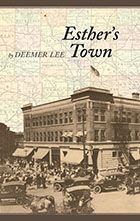 Esther's Town
Deemer Lee
University of Iowa Press, 2012 Esther's Town could be "Any Town, U.S.A.," for the equals of its cast of characters can be found in any small town. And here, as usual, was the town newspaper editor, the observing eye of all the foibles and peccadillos that form any town's history. Remembering all the years with love and humor, editor Deemer Lee chronicled the forty-four years he gathered and wrote news—forty-one of them as editor and publisher of his town's newspaper.
He dug into old records, recalled old times, and talked with old-timers. He illuminated the transition of a town, from Estherville’s pioneer settlement to the busy, active town it is today.
The excitement and fun begin with a story of bootleggers, Chautauqua meetings, and an accomplished arsonist—who achieves in less than two months the impressive score of burning seven barns and one feed store, with an unsuccessful attempt on the Methodist church. Scandinavians move in, build crude shelters for the first winter, and add their special characteristics to the town. The Irish arrive and stamp their mark on the whole territory. The circus comes to town and entrances everyone with its ancient pageantry. The railroads come through and add a rowdy element to the population. The Depression begins and farms see 11-cent corn, 108-degree heat, and a twister.
All these events, plus adventures with a massive meteorite and haunting river tragedies, create the drama and flow of small-town life, story by story, in a fascinating revelation of Americana.
An Estimate of the Land Tax Collection in China, 1753 and 1908
Yeh-Chien Wang
Harvard University Press, 1973 This book, resulting from extensive research on the land tax in China during the Ch'ing Period (1644-1911), is based on the multivolume Ts'ai-cheng shuo-ming-shu (Financial reports) produced from a nationwide survey of public finance, 1908-1910, and numerous local gazetteers. It reveals in detail the complexity of surcharges levied with tax quotas, and so provides the first realistic estimate of the land tax actually collected in different provinces and districts.
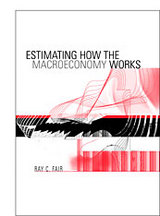 Estimating How the Macroeconomy Works
Ray Fair
Harvard University Press, 2004 Macroeconomics tries to describe and explain the economywide movement of prices, output, and unemployment. The field has been sharply divided among various schools, including Keynesian, monetarist, new classical, and others. It has also been split between theorists and empiricists. Ray Fair is a resolute empiricist, developing and refining methods for testing theories and models. The field cannot advance without the discipline of testing how well the models approximate the data. Using a multicountry econometric model, he examines several important questions, including what causes inflation, how monetary authorities behave and what are their stabilization limits, how large is the wealth effect on aggregate consumption, whether European monetary policy has been too restrictive, and how large are the stabilization costs to Europe of adopting the euro. He finds, among other things, little evidence for the rational expectations hypothesis and for the so-called non-accelerating inflation rate of unemployment (NAIRU) hypothesis. He also shows that the U.S. economy in the last half of the 1990s was not a "new age" economy.
 Estonian Life Stories
Tiina Kirss
Central European University Press, 2009 After a short period of independence, Estonia was occupied in World War II by the Red Army, then Nazi Germany, and again, for a lasting occupation, by the Soviets. No wonder that a greater part of the roughly one million Estonians had harshly eventful lives. This anthology contains 25 selected life stories collected from Estonians who lived through the tribulations of the 20th century, and describe the travails of ordinary people under numerous regimes. The autobiographical accounts provide authentic perspectives on events of this period, where time is placed in the context of life-spans, and subjects grounded in personal experience. Most of the life stories reveal sufferings under foreign (Russian) oppression. The volume is the product of a large-scale national project to record history by collecting autobiographical accounts, and a process of engaged selection for publication which followed. The variety of life-experiences recorded offers comparison across cultures, as well as an overview of the powerful neighbors as they relinquish and strengthen their hold on Estonia.
 Estrangement Revisited , Part II: Part I, Volume 27
Meir Sternberg and Svetlana Boym
Duke University Press These two special issues focus on estrangement, a concept that pervades twentieth-century literary study and related fields. Estrangement lies at the heart of human experience in art and life: how the familiar is made strange, perceptible, disturbing, as if never before encountered. Also known as defamiliarization or disautomatization, estrangement originated as a form of literary and poetic theory within Russian formalism in 1917 and was elaborated largely through the work of Viktor Borisovich Shklovsky. In essence, estrangement is a method of analyzing the artfulness, rather than the psychological meaning or logical message, of imaginative works of prose and poetry. Each essay in these special issues proceeds from a different perspective. Two essays compare the ideas of Shklovsky with those of equally well-known thinkers—such as Hannah Arendt and Mikhail Bakhtin—regarding freedom and aesthetics. Other essays are historical surveys of estrangement theories and their diasporas during the last century. One contributor considers Diderot's views on art alongside certain modern views on poetry. Another discusses estrangement as seen in the visual artwork of the Russian painter and art theoretician Kazimir Malevich. A third contributor explores estrangement in the work of Dostoyevsky. The special issues end with a previously unpublished interview with Shklovsky, who looks back on a long and troubled career, speaking his mind about literary issues, Communist oppression, and friends and enemies, including Stalin. Contributors. Svetlana Boym, Marietta Chudakova, Jacob Edmond, Caryl Emerson, Michael Holquist, Anna Wexler Katsnelson, Ilya Kliger, Nancy Ruttenburg, Greta N. Slobin, Tatiana Smoliarova, Meir Sternberg, Galin Tihanov, Cristina Vatulescu Meir Sternberg is Professor of Poetics and Comparative Literature at Tel Aviv University. Svetlana Boym is Curt Hugo Reisinger Professor of Slavic Languages and Literatures, and Professor of Comparative Literature, at Harvard University.
The Estrella de Sevilla and Claramonte
Sturgis E. Leavitt
Harvard University Press In this study Professor Leavitt presents from a new point of view the authorship of the Estrella de Sevilla which is generally considered to be the most famous play in Spanish literature. The weight of evidence seems to show that it is the work of a single hand, who is here identified with Andres de Claramonte, a rather obscure dramatist. Whether or not scholars and students interested in Spanish literature agree with the conclusions suggested, they cannot fail to find in this book something that will open up new lines of thought in connection with the well-known play.
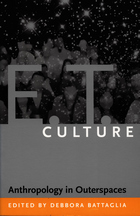 E.T. Culture: Anthropology in Outerspaces
Debbora Battaglia, ed.
Duke University Press, 2005 Anthropologists have long sought to engage and describe foreign or “alien” societies, yet few have considered the fluid communities centered around a shared belief in alien beings and UFO sightings and their effect on popular and expressive culture. Opening up a new frontier for anthropological study, the contributors to E.T. Culture take these communities seriously. They demonstrate that an E.T. orientation toward various forms of visitation—including alien beings, alien technologies, and uncanny visions—engages primary concepts underpinning anthropological research: host and visitor, home and away, subjectivity and objectivity. Taking the point of view of those who commit to sci-fi as sci-fact, contributors to this volume show how discussions and representations of otherworldly beings express concerns about racial and ethnic differences, the anxieties and fascination associated with modern technologies, and alienation from the inner workings of government. Drawing on social science, science studies, linguistics, popular and expressive culture, and social and intellectual history, the writers of E.T. Culture unsettle the boundaries of science, magic, and religion as well as those of technological and human agency. They consider the ways that sufferers of “unmarked” diseases such as Chronic Fatigue Syndrome come to feel alien to both the “healthy” world and the medical community incapable of treating them; the development of alien languages like Klingon; attempts to formulate a communications technology—such as that created for the spaceship Voyager—that will reach alien beings; the pilgrimage spirit of UFO seekers; the out-of-time experiences of Nobel scientists; the embrace of the alien within Japanese animation and fan culture; and the physical spirituality of the Raëlian religious network. Contributors. Debbora Battaglia, Richard Doyle, Joseph Dumit, Mizuko Ito, Susan Lepselter, Christopher Roth, David Samuels
 Et Tu, Brute?: A Short History of Political Murder
Greg Woolf
Harvard University Press, 2007 Why did Caesar have to die--and why did his death solve nothing? The plot was confused, the execution bungled, and within hours different versions of the event were circulating. It was the end of republican Rome and the beginning of the Roman Empire--and yet everything about it remains somewhat mysterious.
Beginning with this legendary political assassination, immortalized in art and literature through the ages, Greg Woolf delivers a remarkable meditation on Caesar's murder as it echoes down the corridors of history, affecting notions and acts of political violence to our day.
Assassins Brutus and Cassius dined with their fiercest enemies within days of the murder--and were then hunted down and killed. After the murder neither conspirators nor Caesar's partisans knew how to react. From these beginnings this book follows the normalization of assassination at Rome, cataloguing the murder of Caesar after Caesar and recording the means, methods, and motives of the perpetrators. How was the Roman Empire so untouched by these events? And how had the Republic contained such violence between friends for so long? Woolf shows how Caesar's death--and the puzzled reactions to it--points back to older ethics of tyrannicide.
When is it justified to kill a head of state? Does extra-judicial execution provide answers worth the cost of the ensuing chaos? Ranging among texts by Cicero, Suetonius, and Seneca, plays by Shakespeare and Corneille, and the ideas of Michel Foucault and Francis Fukuyama, Woolf pursues these questions through the ages. His book tells us not only how, but why, Caesar's Vast Ghost still holds us spellbound.
ET vol 123 num 2
The University of Chicago Press
University of Chicago Press Journals, 2013
ET vol 123 num 3
The University of Chicago Press
University of Chicago Press Journals, 2013
ET vol 123 num 4
The University of Chicago Press
University of Chicago Press Journals, 2013
ET vol 124 num 1
The University of Chicago Press
University of Chicago Press Journals, 2013
ET vol 124 num 2
The University of Chicago Press
University of Chicago Press Journals, 2014
ET vol 124 num 3
The University of Chicago Press
University of Chicago Press Journals, 2014
ET vol 124 num 4
The University of Chicago Press
University of Chicago Press Journals, 2014
ET vol 125 num 1
The University of Chicago Press
University of Chicago Press Journals, 2014
ET vol 125 num 2
The University of Chicago Press
University of Chicago Press Journals, 2015
ET vol 125 num 3
The University of Chicago Press
University of Chicago Press Journals, 2015
ET vol 125 num 4
The University of Chicago Press
University of Chicago Press Journals, 2015
ET vol 126 num 1
The University of Chicago Press
University of Chicago Press Journals, 2015
ET vol 126 num 2
The University of Chicago Press
University of Chicago Press Journals, 2016
ET vol 126 num 3
The University of Chicago Press
University of Chicago Press Journals, 2016 This is volume 126 issue 3 of Ethics. Ethics features scholarly work that covers a range of topics pertaining to moral, political, and legal philosophy from a variety of intellectual perspectives, including social and political theory, law, and economics. Articles in the journal present new theories, apply theory to contemporary moral issues, and focus on historical works that have significant implications for contemporary theory. In addition to major articles, Ethics publishes critical discussions, symposia, review essays, and book reviews.
ET vol 126 num 4
The University of Chicago Press
University of Chicago Press Journals, 2016
ET vol 127 num 1
The University of Chicago Press
University of Chicago Press Journals, 2016
ET vol 127 num 2
The University of Chicago Press
University of Chicago Press Journals, 2017
ET vol 127 num 3
The University of Chicago Press
University of Chicago Press Journals, 2017
ET vol 127 num 4
The University of Chicago Press
University of Chicago Press Journals, 2017
ET vol 128 num 1
The University of Chicago Press
University of Chicago Press Journals, 2017 This is volume 128 issue 1 of Ethics. Ethics features scholarly work that covers a range of topics pertaining to moral, political, and legal philosophy from a variety of intellectual perspectives, including social and political theory, law, and economics. Articles in the journal present new theories, apply theory to contemporary moral issues, and focus on historical works that have significant implications for contemporary theory. In addition to major articles, Ethics publishes critical discussions, symposia, review essays, and book reviews.
ET vol 128 num 2
The University of Chicago Press
University of Chicago Press Journals, 2018
ET vol 128 num 3
The University of Chicago Press
University of Chicago Press Journals, 2018
ET vol 128 num 4
The University of Chicago Press
University of Chicago Press Journals, 2018
ET vol 129 num 1
The University of Chicago Press
University of Chicago Press Journals, 2018
ET vol 129 num 2
The University of Chicago Press
University of Chicago Press Journals, 2019
ET vol 129 num 3
The University of Chicago Press
University of Chicago Press Journals, 2019
ET vol 129 num 4
The University of Chicago Press
University of Chicago Press Journals, 2019
ET vol 130 num 1
The University of Chicago Press
University of Chicago Press Journals, 2019
ET vol 130 num 2
The University of Chicago Press
University of Chicago Press Journals, 2020
ET vol 130 num 3
The University of Chicago Press
University of Chicago Press Journals, 2020
ET vol 130 num 4
The University of Chicago Press
University of Chicago Press Journals, 2020
ET vol 131 num 1
The University of Chicago Press
University of Chicago Press Journals, 2020
ET vol 131 num 2
The University of Chicago Press
University of Chicago Press Journals, 2021
ET vol 131 num 3
The University of Chicago Press
University of Chicago Press Journals, 2021
Etai-Eken
Ed Roberson
University of Pittsburgh Press, 1975 Etai-Eken is a legend told in a series, a cycle of poems, which is to say, told in different languages. The action of the poems in the poem is their moving in and out of the legend by the changes of access to the larger legend; an access of the present in the ancient, of the present’s knowledge and experience of it.
 Etazhi: Second Year Russian Language and Culture
Evgeny Dengub and Susanna Nazarova
Georgetown University Press, 2023 A highly communicative approach to Intermediate Russian grounded in everyday culture and authentic texts Etazhi uses the communicative approach to advance student's Russian proficiency from the Novice High / Intermediate Low level of the ACTFL scale to an Intermediate Mid / Intermediate High level. Designed for one academic year of instruction, Etazhi engages students with highly relevant topics to internalize new vocabulary, expand their grammatical reach, and deepen their cultural understanding of Russian speakers. Chapters on Russian daily life, travel, dating and marriage, clothing, cuisine, health and medicine, education, holiday traditions, and careers are infused with humor and help students acquire the vocabulary and cultural nuance needed to discuss Russian literature, culture, and the arts. Hundreds of authentic texts, photographs, and illustrations gathered from across the Russian Federation–including authentic material written by real people about their experiences in Russia–show the diversity of Russian speakers, culture, and society. Each of the six chapters contains approximately fifty exercises that help students practice the four basic language skills–listening, speaking, reading, and writing. This textbook improves vocabulary and grammar while promoting deeper cultural competency, preparing students to study abroad, and providing a firm foundation for advanced courses. Special features include: - Audio transcripts to aid in comprehension checks (available for free on the Press's website)
- A grammar reference with charts and tables, including case and verb charts
- An extensive Russian-English glossary
- Over 120 authentic photographs and hand-drawn images by a Russian artist
- A sample of presentation materials and a sample exam for chapter one to aid instructors (available for free on the Press's website)
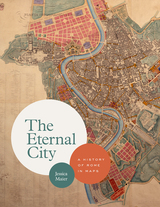 The Eternal City: A History of Rome in Maps
Jessica Maier
University of Chicago Press, 2020 One of the most visited places in the world, Rome attracts millions of tourists each year to walk its storied streets and see famous sites like the Colosseum, St. Peter’s Basilica, and the Trevi Fountain. Yet this ancient city’s allure is due as much to its rich, unbroken history as to its extraordinary array of landmarks. Countless incarnations and eras merge in the Roman cityscape. With a history spanning nearly three millennia, no other place can quite match the resilience and reinventions of the aptly nicknamed Eternal City.
In this unique and visually engaging book, Jessica Maier considers Rome through the eyes of mapmakers and artists who have managed to capture something of its essence over the centuries. Viewing the city as not one but ten “Romes,” she explores how the varying maps and art reflect each era’s key themes. Ranging from modest to magnificent, the images comprise singular aesthetic monuments like paintings and grand prints as well as more popular and practical items like mass-produced tourist plans, archaeological surveys, and digitizations. The most iconic and important images of the city appear alongside relatively obscure, unassuming items that have just as much to teach us about Rome’s past. Through 140 full-color images and thoughtful overviews of each era, Maier provides an accessible, comprehensive look at Rome’s many overlapping layers of history in this landmark volume.
The first English-language book to tell Rome’s rich story through its maps, The Eternal City beautifully captures the past, present, and future of one of the most famous and enduring places on the planet.
 Eternal Consciousness
John S. Dunne
University of Notre Dame Press, 2012
In his new book, John S. Dunne asks: “So what is eternal consciousness? It is, I take it, consciousness of the eternal in us. If time is ‘a changing image of eternity,’ as Plato says, the changing image of the human being is like The Voyage of Life, four paintings by Thomas Cole, showing childhood, youth, adulthood, and age. The eternal in us is the person going through these phases. It is the vertical dimension of the life, as in the title scene of War and Peace where Prince Andre lay on the battlefield looking up into the peaceful sky, perceiving peace in the midst of war. If the horizontal dimension is time and the vertical dimension is eternity, then eternal consciousness is awareness of the vertical dimension. What is more, the vertical dimension carries through the horizontal, as the person walks through life upright instead of being dragged through in ‘quiet desperation.’ Willingness and hope, accordingly, is willingness to walk through upright with hope in the face of death and darkness.” —from the book
What can I know? What should I do? What may I hope? Dunne explores these questions in his characteristic hermeneutic method, finding the answer in “the words of eternal life” (John 6:68). It is the life of the spirit that is the eternal in us, the inner life of knowing and loving, the life of hope and peace and friendship and intelligence. “If there were no eternal consciousness in a man,” Kierkegaard says, “what then would life be but despair?” John Dunne adds, if there is eternal consciousness in us, on the other hand, there is hope.
To readers of John Dunne’s books, Eternal Consciousness will be the latest installment chronicling his spiritual journey; to readers new to Dunne’s oeuvre, it will be a lively introduction to the distinctive voice and thought of an inspiring author.
"As action grows more frantic and voices more shrill in this age of terror, John Dunne's wisdom, born of Eternal Consciousness, shows us and leads us into our true selves—never unloved, never abandoned, willing to walk on with God through life into the very gateway of death itself." —Jon Nilson, Loyola University Chicago
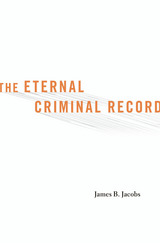 The Eternal Criminal Record
James B. Jacobs
Harvard University Press, 2015 For over sixty million Americans, possessing a criminal record overshadows everything else about their public identity. A rap sheet, or even a court appearance or background report that reveals a run-in with the law, can have fateful consequences for a person’s interactions with just about everyone else. The Eternal Criminal Record makes transparent a pervasive system of police databases and identity screening that has become a routine feature of American life.
The United States is unique in making criminal information easy to obtain by employers, landlords, neighbors, even cyberstalkers. Its nationally integrated rap-sheet system is second to none as an effective law enforcement tool, but it has also facilitated the transfer of ever more sensitive information into the public domain. While there are good reasons for a person’s criminal past to be public knowledge, records of arrests that fail to result in convictions are of questionable benefit. Simply by placing someone under arrest, a police officer has the power to tag a person with a legal history that effectively incriminates him or her for life.
In James Jacobs’s view, law-abiding citizens have a right to know when individuals in their community or workplace represent a potential threat. But convicted persons have rights, too. Jacobs closely examines the problems created by erroneous record keeping, critiques the way the records of individuals who go years without a new conviction are expunged, and proposes strategies for eliminating discrimination based on criminal history, such as certifying the records of those who have demonstrated their rehabilitation.
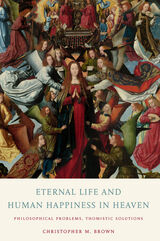 Eternal Life and Human Happiness in Heaven: Philosophical Problems, Thomistic Solutions
Christopher M. Brown
Catholic University of America Press, 2021 Eternal Life and Human Happiness in Heaven treats four apparent problems concerning eternal life in order to clarify our thinking about perfect human happiness in heaven. The teachings of St. Thomas Aquinas provide the basis for solutions to these four problems about eternal life insofar as his teachings call into question common contemporary theological or philosophical presuppositions about God, human persons, and the nature of heaven itself. Indeed, these Thomistic solutions often require us to think very differently from our contemporaries. But thinking differently with St. Thomas is worth it: for the Thomistic solutions to these apparent problems are more satisfying, on both theological and philosophical grounds, than a number of contemporary theological and philosophical approaches.
Christopher Brown deploys his argument in four sections. The first section lays out, in three chapters, four apparent problems concerning eternal life—Is heaven a mystical or social reality? Is heaven other-worldly or this-worldly? Is heaven static or dynamic? Won’t human persons eventually get bored in heaven? Brown then explains how and why some important contemporary Christian theologians and philosophers resolve these problems, and notes serious problems with each of these contemporary solutions. The second section explains, in five chapters, St. Thomas’ significant distinction between the essential reward of the saints in heaven and the accidental reward, and treats in detail his account of that in which the essential reward consists, namely, the beatific vision and the proper accidents of the vision (delight, joy, and charity). The third section treats, in five chapters, St. Thomas’ views on the multifaceted accidental reward in heaven, where the accidental reward includes, among other things, glorified human embodiment, participation in the communion of the saints, and the joy experienced by the saints in sensing God’s “new heavens and new earth.” Finally, section four argues, in four chapters, that St. Thomas’ views allow for powerful solutions to the four apparent problems about eternal life examined in the first section. These solutions are powerful because, not only are they consistent with authoritative, Catholic Christian Tradition, but they do not raise any of the significant theological or philosophical problems that attend the contemporary theological and philosophical solutions examined in the first section.
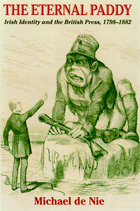 The Eternal Paddy: Irish Identity and the British Press, 1798–1882
Michael de Nie
University of Wisconsin Press, 2004 In The Eternal Paddy, Michael de Nie examines anti-Irish prejudice, Anglo-Irish relations, and the construction of Irish and British identities in nineteenth-century Britain. This book provides a new, more inclusive approach to the study of Irish identity as perceived by Britons and demonstrates that ideas of race were inextricably connected with class concerns and religious prejudice in popular views of both peoples. De Nie suggests that while traditional anti-Irish stereotypes were fundamental to British views of Ireland, equally important were a collection of sympathetic discourses and a self-awareness of British prejudice. In the pages of the British newspaper press, this dialogue created a deep ambivalence about the Irish people, an ambivalence that allowed most Britons to assume that the root of Ireland’s difficulties lay in its Irishness.
Drawing on more than ninety newspapers published in England, Scotland, and Wales, The Eternal Paddy offers the first major detailed analysis of British press coverage of Ireland over the course of the nineteenth century. This book traces the evolution of popular understandings and proposed solutions to the "Irish question," focusing particularly on the interrelationship between the press, the public, and the politicians. The work also engages with ongoing studies of imperialism and British identity, exploring the role of Catholic Ireland in British perceptions of their own identity and their empire.
Eternal People: A Novel
David Milofsky
University Press of Colorado, 1998 <i>Eternal People,/i> tells the story of Joseph Abrams, a Ukrainian Jew who finds his way to America at the end of the nineteenth-century. During a break from his studies in Russia, he returns to his shtetl in the Ukraine to find it is the target of a Cos
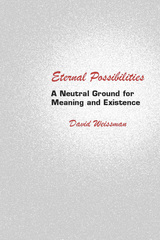 Eternal Possibilities: A Neutral Ground for Meaning and Existence
David Weissman
Southern Illinois University Press, 1977 Eternal Possibilities: A Neutral Ground for Meaning and Existence builds on David Weissman's earlier Dispositional Properties and makes a signal contribution to the study of metaphysics. Here, broadening and enriching the point of view adopted in his earlier work, Weissman cites and criticizes a large number of theories proposed by authors from Plato to Wittgenstein and others exploring language theory and metaphysics. Students of Wittgenstein will be especially interested in Mr. Weissman's critical examination of Wittgenstein's claim in the Tractatus that possibilities are the facts for logic. Weissman proposes a modal theory of properties: they exist in the first instance as possibilities. He argues that a sentence is meaningful if it signifies a property or complex of properties existing as a possible, and true if that possible is instantiated. The status of possibilities and their relation to actual states of affairs are considered in detail.
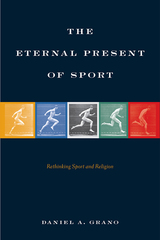 The Eternal Present of Sport: Rethinking Sport and Religion
Daniel A. Grano
Temple University Press, 2017 In his persuasive study The Eternal Present of Sport, Daniel Grano rethinks the sport-religion relationship by positioning sport as a source of theological trouble. Focusing on bodies, time, movement, and memory, he demonstrates how negative theology can be practically and theoretically useful as a critique of elite televised sport.
Grano asserts that it is precisely through sport’s highest religious ideals that controversies are taking shape and constituting points of political and social rupture. He examines issues of transcendence, “legacy”—e.g., “greatest ever,” or “all-time”—and “witnessing” through instant replay, which undermine institutional authority. Grano also reflects on elite athletes representing especially powerful embodiments of religious and social conflict, including around issues related to gender, sexuality, ability doping, traumatic brain injury, and institutional greed.
Elite sport is in a period of profound crisis. It is through the ideals Grano analyzes that we can imagine a radically alternative future for elite sport.
Eternal Russia: Yeltsin, Gorbachev, and the Mirage of Democracy
Jonathan Steele
Harvard University Press, 1994 Here is an eyewitness account of the six years of turbulent change from the Soviet Union to Russia. Jonathan Steele’s three decades as a journalist covering that eternal nation have given him a keen and deeply informed perspective on the democratic revolution and the issues still threatening the new nation. What does the future hold for Russian democracy under Yeltsin? Can market reform work? Under all the news and confusion, how much has the country really changed?
Eternal Russia draws on Steele’s interviews with key figures, including Gorbachev and the former Communist Party Politburo, as well as senior members of the Yeltsin inner circle.
Eternal Sentences
Michael McGriff
University of Arkansas Press, 2021 Winner, 2021 Miller Williams Poetry Prize Michael McGriff’s Eternal Sentences bears witness to the world of gravel roads, working-class families, and geographic isolation in poems that illuminate both common occurrence and the territories of the surreal. Here, in rendering every line as a single sentence, McGriff depicts a world seen through fragments, quick leaps, and wild associations. Haunted as much by place and people as by the possibilities of image-making itself, Eternal Sentences is a song for the hidden depots of rural America.
The Eternal Son
Cristovão Tezza
Tagus Press, 2013
In this multi-award-winning autobiographical novel, Cristovão Tezza draws readers into the mind of a young father whose son, Felipe, is born with Down syndrome. From the initial shock of diagnosis, and through his growing understanding of the world of hospitals and therapies, Tezza threads the story of his son's life with his own. Felipe, who lives in an eternal present, becomes a remarkable young man; for Tezza, however, the story is a settling of accounts with himself and his own limitations and ultimately a coming to terms with the sublime ironies and arbitrariness of life. He struggles with the phantom of shame, as if his son's condition were an indication of his own worth, and yearns for a "normal" world that is always out of reach. Reading this compelling book is like stumbling through a trapdoor into the writer's mind, where nothing is censored and everything is constantly examined and reinterpreted.
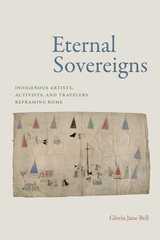 Eternal Sovereigns: Indigenous Artists, Activists, and Travelers Reframing Rome
Gloria Jane Bell
Duke University Press, 2024 In 1925, Pius XI staged the Vatican Missionary Exposition in Rome’s Vatican City. Offering a narrative of the Catholic Church’s beneficence to a global congregation, the exposition displayed thousands of cultural belongings stolen from Indigenous communities, which were seen by one million pilgrims. Gloria Jane Bell’s Eternal Sovereigns offers critical revision to that story. Bell reveals the tenacity, mobility, and reception of Indigenous artists, travelers, and activists in 1920s Rome. Animating these conjunctures, the book foregrounds competing claims to sovereignty from Indigenous and papal perspectives. Bell deftly juxtaposes the “Indian Museum” of nineteenth-century sculptor Ferdinand Pettrich, acquired by the Vatican, with the oeuvre of Indigenous artist Edmonia Lewis. Focusing on Turtle Island, Bell analyzes Indigenous cultural belongings made by artists from nations including Cree, Lakota, Anishinaabe, Nipissing, Kanien’kehá:ka, Wolastoqiyik, and Kwakwaka’wakw. Drawing on years of archival research and field interviews, Bell provides insight into the Catholic Church’s colonial collecting and its ongoing ethnological display practices. Written in a voice that questions the academy’s staid conventions, the book reclaims Indigenous belongings and other stolen treasures that remain imprisoned in the stronghold of the Vatican Museums.
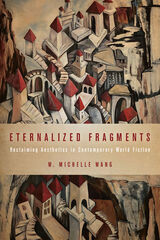 Eternalized Fragments: Reclaiming Aesthetics in Contemporary World Fiction
W. Michelle Wang
Ohio State University Press, 2020 Eternalized Fragments explores the implications of treating literature as art—examining the evolving nature of aesthetic inquiry in literary studies, with an eye to how twentieth- and twenty-first-century world fiction challenges our understandings of form, pleasure, ethics, and other critical concepts traditionally associated with the study of aesthetics.
Since postmodern and contemporary fiction tend to be dominated by disjunctures, paradoxes, and incongruities, this book offers an account of how and why readers choose to engage regardless, articulating the cognitive rewards such difficulties offer. By putting narrative and philosophical approaches in conversation with evolutionary psychology and contemporary neuroscience, W. Michelle Wang examines the value of attending to aesthetic experiences when we read literature and effectively demonstrates that despite the aesthetic’s stumble in time, our ongoing love affair with fiction is grounded in our cognitive engagements with the text’s aesthetic dimensions.
Drawing on a diverse range of works by Gabriel García Márquez, Kazuo Ishiguro, Arundhati Roy,Cormac McCarthy, Jeanette Winterson, Jennifer Egan, Italo Calvino, Flann O’Brien, and Alasdair Gray, Eternalized Fragments lucidly renders the aesthetic energies at work in the novels’ rich potentialities of play, the sublime’s invitation to affective renegotiations, and beauty’s polysemy in shaping readerly capacities for nuance.
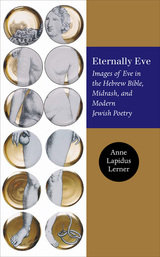 Eternally Eve: Images of Eve in the Hebrew Bible, Midrash, and Modern Jewish Poetry
Anne Lapidus Lerner
University Press of New England, 2007 The biblical accounts of Eve's life are central to Western culture, occupying a privileged place in our literature and art, culture, and society. For both Judaism and Christianity, these stories involving Eve have for centuries been entangled with the religious and social construction of gender. The ambiguous biblical record of her life from the two versions of her creation, through her encounter with the forbidden fruit, to her expulsion from Eden, and followed by the tantalizing glimpses of her life in the real world has served through the ages as a mirror of commonly held views about women. For Jewish readers, Eve's role as metonym -- signifying womanhood, or Jewish womanhood, as a whole -- is of prime importance. By tracing the imagined character of Eve from ancient times to the present, Eternally Eve opens a window on the transmission and persistence of cultural and social values. Eternally Eve takes as its subject the many ways these stories can be read, interpreting the biblical narratives as well as their iteration by rabbinic midrashists and modern poets. Anne Lapidus Lerner argues that we must set aside, or at least rethink, a series of assumptions about Eve that have been dominant in Jewish thought for centuries and instead return to the original texts to rediscover meanings implicit in them. Using modern poetry about Eve as a touchstone for reinterpreting older texts, Lerner discovers that Genesis is often more open to contemporary values than are later rabbinic texts. Linking sacred texts to works of the classical and modern imagination, Lerner restores to her sources meanings suppressed or neglected over many years and demonstrates their power to speak today.
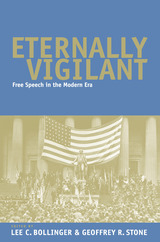 Eternally Vigilant: Free Speech in the Modern Era
Edited by Lee C. Bollinger and Geoffrey R. Stone
University of Chicago Press, 2001 While freedom of speech has been guaranteed us for centuries, the First Amendment as we know it today is largely a creation of the past eighty years. Eternally Vigilant brings together a group of distinguished legal scholars to reflect boldly on its past, its present shape, and what forms our understanding of it might take in the future. The result is a unique volume spanning the entire spectrum of First Amendment issues, from its philosophical underpinnings to specific issues like campaign regulation, obscenity, and the new media.
"With group efforts, such as this collection of essays, it is almost inevitable that there will be a couple—and often several—duds among the bunch, or at least a dismaying repetition of ideas. Such is not the case here. . . . Whether one agrees with a given author or not (and it is possible to do both with any of the essays), each has something to add. Overall, Eternally Vigilant is a thoughtful and thought-provoking book, consistently intelligent and, at times, brilliant."—Richard J. Mollot, New York Law Journal
Contributors:
Lillian R. BeVier
Vincent Blasi
Lee C. Bollinger
Stanley Fish
Owen M. Fiss
R. Kent Greenawalt
Richard A. Posner
Robert C. Post
Frederick Schauer
Geoffrey R. Stone
David A. Strauss
Cass R. Sunstein
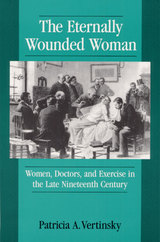 ETERNALLY WOUNDED WOMAN: "WOMEN, DOCTORS, AND EXERCISE IN THE LAT
Patricia A. Vertinsky
University of Illinois Press, 1994 "This book is about the historical influence of late nineteenth-century medical beliefs and values on the perceived benefits of physical activity for women across their life span. The practice of medicine and the knowledge which underpins it have never been simple and logical progressions from one truth to another. Rather, scientific knowledge, medical practice and social perception have interacted to affect views concerning what kinds of amounts of physical activity, including sport and healthful exercise, might be most appropriate for girls and women at different points in their life course.
"A review of thinking is needed in the field of sociohistorical analysis concerning attitudes toward the female body and attempts to regulate female physical activity. Such analyses may generate new insights into the questions of both social control and the unevenness of progress in women's real or perceived opportunities for participating freely and fully in sports and exercise of their choice."
Eternity & Oranges
Christopher Bakken
University of Pittsburgh Press, 2016 “We’d not slept in days, or else we were/ still sleeping—who could tell?” someone asks in the opening poem of Eternity & Oranges. The voices we encounter in this book speak on the verge of disappearance, from places marked by disintegration and terror. Christopher Bakken's poems are acts of conjuring. They move from the real political landscapes of Greece, Italy, and Romania, into more surreal spaces where history comes alive and the summoned dead speak. In the formally diverse long poem, “Kouros/Kore,” but also in this book’s terse and harrowing dream songs, Bakken writes with devastating force, at every turn “Guilty of the crime of praise” while “begging for an antidote to beauty.”
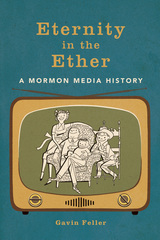 Eternity in the Ether: A Mormon Media History
Gavin Feller
University of Illinois Press, 2023 Mass media and the Church of Jesus Christ of Latter-day Saints evolved alongside each other, and communications technology became a fundamental part of the Church’s institutions and communities. Gavin Feller investigates the impact of radio, television, and the internet on Mormonism and what it tells us about new media’s integration into American life. The Church wrestled with the promise of new media to help implement its vision of Zion. But it also had to contend with threat that media posed to the family and other important facets of the Latter-day Saint faith. Inevitably, media technologies forced the leadership and lay alike to reconsider organizational values and ethical commitments. As Feller shows, the conflicts they faced illuminate the fundamental forces of control and compromise that enmesh an emerging medium in American social and cultural life. Intriguing and original, Eternity in the Ether blends communications history with a religious perspective to examine the crossroads where mass media met Mormonism in the twentieth century.
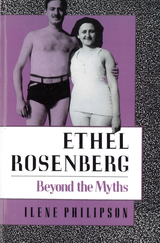 Ethel Rosenberg: Beyond the Myths
Philipson, Ilene
Rutgers University Press, 1992 Ilene Philipson's biography of Ethel Rosenberg, only the second woman in U.S. history to be executed for treason, is now available in paperback for the first time. "Contributes to women's history and biography and to radical history, particularly to our understanding of family, gender relations, and feminine identity of women radicals. . . . Ilene Philipson has produced a fascinating book"--Nancy Chodorow "Tells the story of Ethel . . . from a woman's point of view. . . . Philipson, whose literary style has the clean exactitude of a tracer bullet, has produced a heart-rending masterpiece. If you read only one book a year, make it this one." --Florence King, Newsday "[Ethel Rosenberg's] stoicism on the witness stand, her unflinching response to the guilty verdict and death sentence, and her seeming indifference to the ordeal of her two children shocked the nation. . . . Concerned with rehabilitating not only Ethel Rosenberg's name, but also her image, the author creates a moving portrait of a human and ordinary woman."--John Patrick Diggins, New York Times Book Review
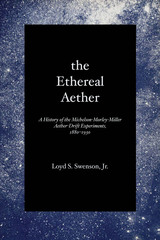 The Ethereal Aether: A History of the Michelson-Morley-Miller Aether-drift Experiments, 1880-1930
By Loyd S. Swenson, Jr.
University of Texas Press, 1972 The Ethereal Aether is a historical narrative of one of the great experiments in modern physical science. The fame of the 1887 Michelson-Morley aether-drift test on the relative motion of the earth and the luminiferous aether derives largely from the role it is popularly supposed to have played in the origins, and later in the justification, of Albert Einstein’s first theory of relativity; its importance is its own. As a case history of the intermittent performance of an experiment in physical optics from 1880 to 1930 and of the men whose work it was, this study describes chronologically the conception, experimental design, first trials, repetitions, influence on physical theory, and eventual climax of the optical experiment. Michelson, Morley, and their colleague Miller were the prime actors in this half-century drama of confrontation between experimental and theoretical physics. The issue concerned the relative motion of “Spaceship Earth” and the Universe, as measured against the background of a luminiferous medium supposedly filling all interstellar space. At stake, it seemed, were the phenomena of astronomical aberration, the wave theory of light, and the Newtonian concepts of absolute space and time. James Clerk Maxwell’s suggestion for a test of his electromagnetic theory was translated by Michelson into an experimental design in 1881, redesigned and reaffirmed as a null result with Morley in 1887, thereafter modified and partially repeated by Morley and Miller, finally completed in 1926 by Miller alone, then by Michelson’s team again in the late 1920s. Meanwhile Helmholtz, Kelvin, Rayleigh, FitzGerald, Lodge, Larmor, Lorentz, and Poincaré—most of the great names in theoretical physics at the turn of the twentieth century—had wrestled with the anomaly presented by Michelson’s experiment. As the relativity and quantum theories matured, wave-particle duality was accepted by a new generation of physicists. The aether-drift tests disproved the old and verified the new theories of light and electromagnetism. By 1930 they seemed to explain Einstein, relativity, and space-time. But in historical fact, the aether died only with its believers.
Ethereal Queer: Television, Historicity, Desire
Amy Villarejo
Duke University Press, 2013 In Ethereal Queer, Amy Villarejo offers a historically engaged, theoretically sophisticated, and often personal account of how TV representations of queer life have changed as the medium has evolved since the 1950s. Challenging the widespread view that LGBT characters did not make a sustained appearance on television until the 1980s, she draws on innovative readings of TV shows and network archives to reveal queer television’s lengthy, rich, and varied history. Villarejo goes beyond concerns about representational accuracy. She tracks how changing depictions of queer life, in programs from Our Miss Brooks to The L Word, relate to transformations in business models and technologies, including modes of delivery and reception such as cable, digital video recording, and online streaming. In so doing, she provides a bold new way to understand the history of television.
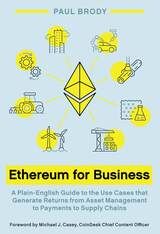 Ethereum for Business: A Plain-English Guide to the Use Cases that Generate Returns from Asset Management to Payments to Supply Chains
Paul Brody
Epic Books, 2023 In Ethereum for Business, Paul Brody provides a plain English guide to doing business on the world's largest blockchain. The book covers an overview of Ethereum, business applications on Ethereum, and various advanced topics. Including case studies and examples from the world of Ethereum, Ethereum for Business is readable both linearly and by dipping in and out of chapters.
The book is aimed at business executives who want to understand the potential of blockchain for solving real-world business problems, and readers with technical knowledge who want to understand the business use cases.
Ethereum for Business covers topics such as:
• Basics of blockchain technology and key components on wallets, tokens, and keys.
• Decentralization in digital marketplaces, smart contracts, privacy, scalability, supply chain management, trade finance, payments and asset transfers, and tokenomics.
• Transforming the world of enterprise computing by enabling companies to model and manage assets, real or digital, that exist off-chain.
• A guide for implementation that contains key success metrics for enterprises considering blockchain-based solutions.
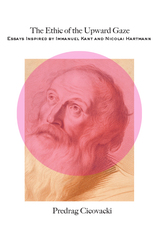 The Ethic of the Upward Gaze: Essays Inspired by Immanuel Kant and Nicolai Hartmann
predrag cicovacki
St. Augustine's Press, 2024 "Kant and Hartmann share a belief that is less common than it once was: that the aim of morality is to guide us toward becoming the best version of ourselves. Morality is not the same as prudence, nor is it a utilitarian calculus about what actions lead to our advantage. Yes, we do need to see what is in front of us, and handle what demands our immediate attention, in accordance with the rules endorsed by our societies. We also need to secure our existence as well as the material flourishing of ourselves and those who depend on us. But focusing exclusively on such issues deflects our consciousness from the high road of morality. […]
These essays explore ideas relating to the suffocating and hope-crushing atmosphere of negativity and disorientation in the contemporary world. The message of this collection is that, if we dare to open our eyes and our hearts, we can find that there is much in ourselves and the world that deserves our reverence and our loving gaze. It is not too late to recall that besides the natural and the social worlds, there is yet another order of being: the spiritual. And without a connection with this spiritual order, we cannot experience our humanity at its best."
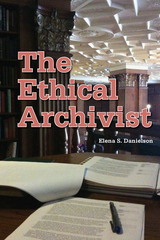 The Ethical Archivist
Elena S. Danielson
Society of American Archivists, 2010 Archivists deal with unique ethical challenges on a regular basis, and these complex conundrums are the focus of this compelling book by Elena Danielson. She illustrates how the daily decisions made by archivists connect to larger issues of social responsibility and the need to construct a balanced and accurate historic record.
Danielson both analyzes real-life cases and poses theoretical questions to help working archivists better understand ethics as an applied practice. The author clearly illustrates how ethical considerations and dilemmas emerge in seemingly routine facets of archival work-from acquisition and appraisal through disposition and deaccessioning. Danielson also focuses on such fascinating phenomena as forged documents and displaced archives. She thoughtfully considers the archivist's responsibility to protect cultural property, and includes commentary on current trends in privacy law, clearly explaining relevant legislation.
Helpful appendices include an analysis and reference to ten professional codes of ethics, sample acquisition guidelines and collections management policies, a select list of federal legislation affecting access to private information, and a bibliography.
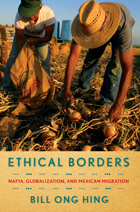 Ethical Borders: NAFTA, Globalization, and Mexican Migration
Authored by Bill Ong Hing
Temple University Press, 2010 In his topical new book, Ethical Borders, Bill Ong Hing asks, why do undocumented immigrants from Mexico continue to enter the United States and, what would discourage this surreptitious traffic? An expert on immigration law and policy, Hing examines the relationship between NAFTA, globalization, and undocumented migration, and he considers the policy options for controlling immigration. He develops an ethical rationale for opening up the U.S./Mexican border, as well as improving conditions in Mexico so that its citizens would have little incentive to migrate. In Ethical Borders Hing insists that reforming NAFTA is vital to ameliorating much of the poverty that drives undocumented immigration and he points to the European Union's immigration and economic development policies as a model for North America. Hing considers the world-wide economic crisis and the social problems that attend labor migration into homogenous countries, arguing for a spectrum of changes, including stricter border enforcement and more effective barriers; a path to citizenship for undocumented migrants; or a guest worker program. Hing also situates NAFTA and its effects in the larger, and rapidly shifting, context of globalization—particularly the recent rise of China as the world's economic giant. Showing how NAFTA’s unforeseen consequences have been detrimental to Mexico, Hing passionately argues that the United States is ethically bound to address the problems in a way that puts prosperity within the grasp of all North Americans.
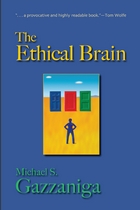 The Ethical Brain
Michael S. Gazzaniga
Dana Press, 2005 Will increased scientific understanding of our brains overturn our beliefs about moral and ethical behavior? How will increasingly powerful brain imaging technologies affect the ideas of privacy and of self-incrimination? Such thought-provoking questions are rapidly emerging as new discoveries in neuroscience have raised difficult legal and ethical dilemmas. Michael Gazzaniga, widely considered to be the father of cognitive neuroscience, investigates with an expert eye some of these controversial and complex issues in The Ethical Brain.
He first examines "lifespan neuroethics" and considers how brain development defines human life, from when an embryo develops a brain and could be considered "one of us" to the issues raised as the brain ages, such as whether we should have complete freedom to extend our lives and enhance our brains through the use of genetics, pharmaceuticals, and training.
Gazzaniga also considers the challenges posed to the justice system by new discoveries in neuroscience. Recent findings suggest that our brain has already made a decision before we become fully aware of doing so, raising the question of whether the concept of personal responsibility can remain a fundamental tenet of the law. Gazzaniga argues that as neuroscience learns more about the unreliability of human memory, the very foundation of trial law will be challenged.
Gazzaniga then discusses a radical re-evaluation of the nature of moral belief, as he not only looks at possibly manipulating the part of the brain that creates beliefs but also explores how scientific research is building a brain-based account of moral reasoning.
The Ethical Brain is a groundbreaking volume that presents neuroscience's loaded findings—and their ethical implications—in an engaging and readable manner, offering an incisive and thoughtful analysis of the medical ethics challenges confronting modern society at the dawn of the twenty-first century.
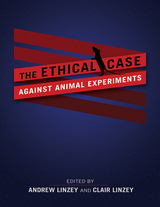 The Ethical Case against Animal Experiments
Andrew Linzey, Clair Linzey
University of Illinois Press, 2018 At present, human beings worldwide are using an estimated 115.3 million animals in experiments—a normalization of the unthinkable on an immense scale. In terms of harm, pain, suffering, and death, animal experiments constitute one of the major moral issues of our time. Given today’s deeper understanding of animal sentience, the contributors to this volume argue that we must afford animals a special moral consideration that precludes their use in experiments. The Ethical Case against Animal Experiments begins with the Oxford Centre for Animal Ethics's groundbreaking and comprehensive ethical critique of the practice of animal experiments. A second section offers original writings that engage with, and elaborate on, aspects of the Oxford Centre report. The essayists explore historical, philosophical, and personal perspectives that range from animal experiments in classical times to the place of necessity in animal research to one researcher's painful journey from researcher to opponent. A devastating look at a contemporary moral crisis, The Ethical Case against Animal Experiments melds logic and compassion to mount a powerful challenge to human cruelty.
 Ethical Challenges in Managed Care: A Casebook
Karen G. Gervais, Reinhard Priester, Dorothy E. Vawter, Kimberly K. Otte, and Mary M. Solberg, Editors
Georgetown University Press, 1999 The rapid rise of managed care in the United States has introduced new complexities into ethical dilemmas in health care by changing the traditional relationships among health plans, payers, providers, and patients. Through twenty case studies that provide snapshots of a wide range of ethical challenges, this book explores the goals, methods, and practices of managed care. Accompanying each case are questions for consideration and a pair of commentaries by prominent contributors from diverse fields. Through the cases and commentaries, this book clarifies the internal workings of managed care, explains relevant concepts, and offers practical, constructive guidance in addressing the ethical and policy issues. The cases address a broad spectrum of issues concerning rationing shared resources, financial incentives, quality of care, and responsibilities to patients, vulnerable populations, and the community. Specific topics range from coverage of emergency services through funding medical education to respecting patients' religious beliefs and caring for the seriously mentally ill. This casebook offers a wealth of insights into critical issues that affect the delivery of managed care in an increasingly competitive market. It will be invaluable for those managing the delivery and financing of health care and for students and practitioners of the health professions and health administration, as well as interested recipients of managed care.
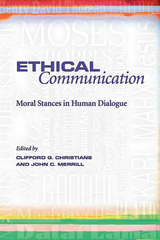 Ethical Communication: Moral Stances in Human Dialogue
Clifford G. Christians and John C. Merrill
University of Missouri Press, 2009 Proponents of professional ethics recognize the importance of theory but also know that the field of ethics is best understood through real-world applications. This book introduces students and practitioners to important ethical concepts through the lives of major thinkers ranging from Aristotle to Ayn Rand, John Stuart Mill to the Dalai Lama. Some two dozen contributors approach media ethics from five perspectives—altruistic, egoistic, autonomous, legalist, and communitarian—and use real people as examples to convey ethical concepts as something more than mere abstractions. Readers see how Confucius represents group loyalty; Gandhi, nonviolent action; Mother Teresa, the spirit of sacrifice. Each profile provides biographical material, the individual’s basic ethical position and contribution, and insight into how his or her moral teachings can help the modern communicator. The roster of thinkers is gender inclusive, ethnically diverse, and spans a broad range of time and geography to challenge the misperception that moral theory is dominated by Western males. These profiles challenge us not to give up on moral thinking in our day but to take seriously the abundance of good ideas in ethics that the human race provides. They speak to real-life struggles by applying to such trials the lasting quality of foundational thought. Many of the root values to which they appeal are cross-cultural, even universal. Exemplifying these five ethical perspectives through more than two dozen mentors provides today’s communicators with a solid grounding of key ideas for improving discussion and attaining social progress in their lives and work. These profiles convey the diversity of means to personal and social betterment through worthwhile ideas that truly make ethics come alive.
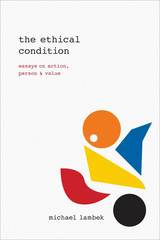 The Ethical Condition: Essays on Action, Person, and Value
Michael Lambek
University of Chicago Press, 2015 Written over a thirty-year span, Michael Lambek’s essays in this collection point with definitive force toward a single central truth: ethics is intrinsic to social life. As he shows through rich ethnographic accounts and multiple theoretical traditions, our human condition is at heart an ethical one—we may not always be good or just, but we are always subject to their criteria. Detailing Lambek’s trajectory as one anthropologist thinking deeply throughout a career on the nature of ethical life, the essays accumulate into a vibrant demonstration of the relevance of ethics as a practice and its crucial importance to ethnography, social theory, and philosophy.
Organized chronologically, the essays begin among Malagasy speakers on the island of Mayotte and in northwest Madagascar. Building from ethnographic accounts there, they synthesize Aristotelian notions of practical judgment and virtuous action with Wittgensteinian notions of the ordinariness of ethical life and the importance of language, everyday speech, and ritual in order to understand how ethics are lived. They illustrate the multiple ways in which ethics informs personhood, character, and practice; explore the centrality of judgment, action, and irony to ethical life; and consider the relation of virtue to value. The result is a fully fleshed-out picture of ethics as a deeply rooted aspect of the human experience.
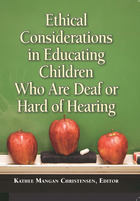 Ethical Considerations in Educating Children Who Are Deaf or Hard of Hearing
Kathee Mangan Christensen
Gallaudet University Press, 2011 The education of deaf or hard of hearing children has become as complex as the varying needs of each individual child. Teachers face classrooms filled with students who are culturally Deaf, hard of hearing, or post-lingually deaf; they might use American Sign Language, cochlear implants, hearing aids/FM systems, speech, Signed English, sign-supported speech, contact signing, nonverbal communication, or some combination of methods. Educators who decide what tools are best for these children are making far-reaching ethical decisions in each case. This collection features ten chapters that work as constructive conversations to make the diverse needs of these deaf students the primary focus. The initial essays establish fundamental points of ethical decision-making and emphasize that every situation should be examined not with regard for what is “right or wrong,” but for what is “useful.” Absolute objectivity is unattainable due to social influences, while “common knowledge” is ruled out in favor of “common awareness.” Other chapters deal with the reality of interpreting through the professional’s eyes, of how they are assessed, participate, and are valued in the total educational process, including mainstream environments. The various settings of education for deaf children are profiled, from residential schools to life in three cultures for deaf Latino students, to self-contained high school programs. Ethical Considerations in Educating Deaf Children Who Are Deaf or Hard of Hearing offers an invaluable set of guidelines for administrators and educators of children with hearing loss in virtually every environment in a postmodern world.
 The Ethical Demand
Knud Ejler Logstrup
University of Notre Dame Press, 1997 Knud Ejler Løgstrup’s The Ethical Demand is the most original influential Danish contribution to moral philosophy in this century. This is the first time that the complete text has been available in English translation. Originally published in 1956, it has again become the subject of widespread interest in Europe, now read in the context of the whole of Løgstrup’s work.
The Ethical Demand marks a break not only with utilitarianism and with Kantianism but also with Kierkegaard’s Christian existentialism and with all forms of subjectivism. Yet Løgstrup’s project is not destructive. Rather, it is a presentation of an alternative understanding of interpersonal life. The ethical demand presupposes that all interaction between human beings involves a basic trust. Its content cannot be derived from any rule. For Løgstrup, there is not Christian morality and secular morality. There is only human morality. The Ethical Demand is of the highest relevance to contemporary debate, especially around those issues raised by Levinas. It will exert a steadily increasing influence both in theology and philosophy.
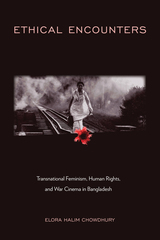 Ethical Encounters: Transnational Feminism, Human Rights, and War Cinema in Bangladesh
Elora Halim Chowdhury
Temple University Press, 2022 Ethical Encounters is an exploration of the intersection of feminism, human rights, and memory to illuminate how visual practices of recollecting violent legacies in Bangladeshi cinema can conjure a global cinematic imagination for the advancement of humanity. By examining contemporary, women-centered Muktijuddho cinema—features and documentaries that focus on the Bangladesh Liberation War of 1971—Elora Chowdhury shows how these films imagine, disrupt, and reinscribe a gendered nationalist landscape of trauma, freedom, and agency. Chowdhury analyzes Bangladeshi feminist films including Meherjaan, and Itihaash Konna (Daughters of History), as well as socially-engaged films by activist-filmmakers including Jonmo Shathi (Born Together), and Shadhinota (A Certain Liberation), to show how war films of Bangladesh can generate possibilities for gender justice. Chowdhury argues that justice-driven films are critical to understanding and negotiating the layered meanings and consequences of catastrophic human suffering yet at the same time they hint at subjectivities and identities that are not reducible to the politics of suffering. Rather, they are key to creating an alternative and disruptive archive of feminist knowledge—a sensitive witnessing, responsible spectatorship, and just responsibility across time, and space. Drawing on Black and transnational feminist critiques, Chowdhury explores questions around women’s place, social roles, and modes of participation in war as well as the visual language through which they become legible as victims/subjects of violence and agents of the nation. Ethical Encounters illuminates the possibilities of film as a site to articulate an ethics that acknowledges a founding violence of the birth of a nation, recuperates it even if in fragments, and imagines differently the irreconcilable relationship between humanity, liberty, and justice.
The Ethical Engineer: An "Ethics Construction Kit" Places Engineering in a New Light
Eugene Schlossberger
Temple University Press, 1993
On occasion, professionals need to use moral reasoning as well as engineering skills to function effectively in their occupation. Eugene Schlossberger has created a practical guide to ethical decision-making for engineers, students, and workers in business and industry.
The Ethical Engineer sets out the tools and materials essential to dealing with whistle-blowing, environmental and safety concerns, bidding, confidentiality, conflict of interest, sales ethics, advertising, employer-employee relations, when to fight a battle, and when to break the rules.
The author offers recommendations and techniques as well as rules, principles, and values that can guide the reader. Lively examples, engaging anecdotes, witty comments, and well-reasoned analysis prove his conviction that "ethics is good business."
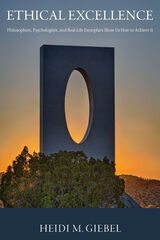 Ethical Excellence: Philosophers, Psychologists, and Real-Life Exemplars Show Us How to Achieve It
Heidi M. Giebel
Catholic University of America Press, 2021 Why do some people achieve ethical excellence while others fail? For example, how did Gloria Lewis overcome a lifetime of difficulty and go on to found a non-profit focused on feeding the homeless while Danny Starrett, despite a seemingly ideal childhood, became a rapist and murderer? Why did some Germans rescue their Jewish neighbors while others stood by?
One recent study found that four personal variables, taken together, differentiated Nazi-era bystanders from rescuers with startling 96.1% accuracy: social responsibility, altruistic moral reasoning, empathic concern, and risk-taking—traits related to ethical excellences (virtues) like justice, benevolence, and courage. Drawing from the combined wisdom of classical Socratic and Confucian philosophy, recent work in psychology, and the lived experience of recognized moral heroes, the book focuses on how each of us can work toward ethical excellence, becoming more like Lewis and neighbor-rescuers than like Starrett and Nazi-era bystanders.
The ancient Socratic and Confucian philosophical traditions offer surprisingly sophisticated advice regarding moral education. Because research in psychology helps us assess the feasibility of cultivating virtue in ourselves and those we influence, Ethical Excellence focuses on combining sound philosophical analysis of ethical virtue and related concepts with relevant empirical research on how these concepts are manifested and developed in everyday practice. Willpower, for example, contributes to development of temperance or moderation, grit relates to perseverance, and empathy is connected to benevolence.
Finally, the study of ethically exceptional people—moral heroes or exemplars—serves as living proof that ethical excellence is possible, and exemplars can provide inspiration to attempt it ourselves and guidance regarding how to do so successfully. Relevant stories and excerpts from the author’s own interviews with award-winning ethical exemplars complement the use of philosophical virtue theory and psychological research on virtue-relevant practice. Together, these three approaches—philosophy, psychology, and biography—help to triangulate” ethical excellence and its achievement, presenting a much clearer and more complete picture than we can get from any one of these methods alone.
The Ethical Fantasy of Rhetorical Theory
Ira Allen
University of Pittsburgh Press, 2018 Despite its centrality to its field, there is no consensus regarding what rhetorical theory is and why it matters. The Ethical Fantasy of Rhetorical Theory presents a critical examination of rhetorical theory throughout history, in order to develop a unifying vision for the field. Demonstrating that theorists have always been skeptical of yet committed to "truth" (however fantastic), Ira Allen develops rigorous notions of truth and of a "troubled freedom" that spring from rhetoric’s depths. In a sweeping analysis from the sophists Aristotle, and Cicero through Kenneth Burke, Chaïm Perelman and Lucie Olbrechts-Tyceta, and contemporary scholars in English, communication, and rhetoric’s other disciplinary homes, Allen offers a novel definition of rhetorical theory: as the self-consciously ethical study of how humans and other symbolic animals negotiate constraints.
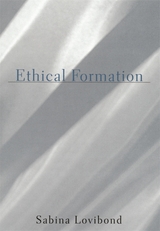 Ethical Formation
Sabina Lovibond
Harvard University Press, 2004 Sabina Lovibond invites her readers to see how the "practical reason view of ethics" can survive challenges from within philosophy and from the antirationalist postmodern critique of reason.
She elaborates and defends a modern practical-reason view of ethics by focusing on virtue or ideal states of character that involve sensitivity to the objective reasons circumstances bring into play. At the heart of her argument is the Aristotelian idea of the formation of character through upbringing; these ancient ideas can be made contemporary if one understands them in a naturalized way. She then explores the implications that arise from the naturalization of the classical view, weaving into her theory ideas of Jacques Derrida and J. L. Austin. The book also discusses two modes of resistance to an existing ethical culture--one committed to the critical employment of shared norms of rationality, the other aspiring to a more radical attitude, grounded in hostility to the "universal." Lovibond tries to determine what may be correct in this second, admittedly paradoxical, tendency.
This is a timely and valuable effort to connect the most advanced forms of thinking in the analytic tradition and in the Continental tradition, and to extend our understanding of the intimacies and resistances between these two prominent strands of contemporary philosophy.
The Ethical Foundations of Economics
John J. Piderit, SJ
Georgetown University Press Piderit explores the failures of mainstream economics and proposes an alternative grounded in natural law. His assessment is grounded in the Christian higher law tradition which assumes that objective standards known to human reason should govern society and individuals. This book demonstrates both the reasonableness of a distinguished ethical tradition and its capacity to address a wide range of ethical issues, economic as well as personal and social. Piderit emphasizes that natural law theory underlies the U.S. Constitution and informs Catholic, Protestant, and Jewish worship today.
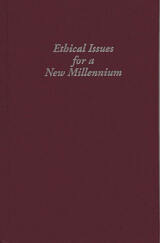 Ethical Issues for a New Millennium
Edited by John Howie
Southern Illinois University Press, 2002
Modern advances in science and medicine bring with them an array of complex ethical dilemmas. In Ethical Issues for a New Millennium editor John Howie addresses contemporary ethical problems with eight essays from top thinkers in the field. This collection offers new and comprehensive overviews of some very tough ethical issues that will remain foremost in our minds in the years ahead. Each essay is written by a recognized authority within his or her specific field, and brings to light ethical questions rooted in ongoing philosophical debates in arenas such as human rights, the welfare state, women’s rights, genetic and gender equality, genetic equity, cloning, organ transplants, environmental ethics, insurrectionist ethics, and the erosion of moral sensibility.
These lectures where originally presented at Southern Illinois University as part of the Wayne Leys Memorial Lectures series. This collection represents the fourth volume in the series.
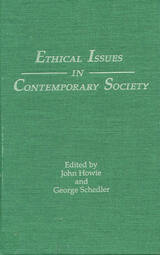 Ethical Issues in Contemporary Society
John Howie
Southern Illinois University Press, 1995
In this volume of Leys Lectures, the third collection of Wayne Leys Memorial Lectures, six distinguished essayists demonstrate the relevance of ethics to contemporary concerns by constructively exploring major ethical issues deeply embedded in our society.
The essays, written by noted scholars Tom Regan, Carol C. Gould, James Rachels, James P. Sterba, Louis P. Pojman, and David L. Norton, focus on issues of feminism, the exploitation of animals, economic injustice, racial prejudice, naive moral relativism, and the failure of public education.
Tom Regan and Louis P. Pojman both address the issue of animal rights. Regan directs his attention to an ethic-of-care feminism, which contends that the ideology of male superiority—not only to women but to all creatures—must be destroyed. By means of a "consistency argument," he extends ethic-of-care feminism to the treatment of animals, insisting that we must not permit to be done to animals "in the name of science" what we would not allow to be done to human beings. Pojman, on the other hand, addresses the question of animal rights through a critical analysis of seven theories of the moral status of animals, arguing that while animals have no natural "rights" since they are unable to enter into contracts, they do deserve to be treated kindly. In his view, much animal research could be abandoned without significant loss.
What rethinking of democracy in terms of freedom and equality is required by economic justice? Carol C. Gould offers an answer to this question by arguing that economic justice requires that workers control the production process as well as the distribution process. Such justice would provide the basis of "positive freedom" as self-development without ignoring the importance of the absence of constraints.
Taking racial prejudice as his paradigm, James Rachels explores the deeper meaning of prejudice and what equality of treatment involves. Noting the subtlety of prejudicial reasoning, he examines how stereotypes, unconscious bias, and the human tendency toward rationalization make it difficult even for people of good will to prevent prejudice from influencing their actions.
James P. Sterba invites the reader to consider a different and more general problem of how to persuade people to act for moral reasons. To accomplish this aim he shows morality to be a requirement of rationality and "the welfare liberal ideal" (the right to welfare and the right to equal opportunity) to be a fusion of the practical ends of five ideals—liberty, fairness, common good, androgyny, and equality.
For David L. Norton, one of our most pressing problems is the failure of our educational system. The system fails to enable students to make wise "life-shaping" choices involving vocation, marriage, children, and friendship. In order to make good choices, human beings must live and work in an environment that provides experiences that authenticate "personal truths" indispensable to worthy living. These personal truths include direct acquaintance with vocational alternatives and participation in actual service to others.
Collectively, these essays bring into sharp focus the urgent moral issues confronting our society and the need for ongoing discussion and examination of these issues in order to gain deeper understanding of and possible solutions to the problems they present.
 The Ethical Lobbyist: Reforming Washington’s Influence Industry
Thomas T. Holyoke
Georgetown University Press, 2015 Lobbyists in Washington aren’t a new phenomenon. Since the early days of the republic, citizens and groups alike have hired professionals to press their interests with lawmakers. However, recent examples of misconduct—like that seen in the Abramoff scandal—highlight the unique ethical challenges this industry faces in the twenty-first century. Though major scandals happen less frequently than popularly believed, the more pervasive ethics problem is that members of the profession often cut deals that go against their clients' interests. They sacrifice the interests of those they represent in order to curry favor with lawmakers. In The Ethical Lobbyist, Thomas T. Holyoke exposes how current industry regulations fall short of ensuring principled behaviors and may actually incentivize unethical behavior. Holyoke presents the provocative argument that, in addition to welcoming stronger regulations, lobbyists need to borrow a page from the legal profession and adopt ironclad guarantees of principled representation. The Ethical Lobbyist puts forth a set of principles and a workable program for implementing reform. The result is a road map to reform that will transform “ethical lobbyist” from an oxymoron to an expectation—and change the industry and our government for the better.
Ethical Principles and Practice
John Howie
Southern Illinois University Press, 1987
The second volume in applied ethics based on the distinguished Wayne Leys Memorial Lectureship Series.
With guidelines from legal reasoning, Michael D. Bayles examines “Moral Theory and Application.” Abraham Edel questions “Ethics Applied Or Conduct Enlightened?” The late Warner A. Wick shows in “The Good Person and the Good Society: Some Ideals Foolish and Otherwise” that devotion to ideals need not be either fanaticism or foolishness. John Lachs contends that many public gains are purchased at the cost of individuals being manipulated in “Public Benefit, Private Costs.” James E. Childress in “Gift of Life…” considers ethical issues in obtaining and distributing human organs. Carl Wellman in “Terrorism and Moral Rights” argues that there can be no “rights-based justification” for anti-abortion terrorism.
 Ethical Principles for Social Policy
John Howie
Southern Illinois University Press, 1983
Abortion, euthanasia, racism, sexism, paternalism, the rights of children, the population explosion, and the dynamics of economic growth are examined in the light of ethical principles by leading philosophers in order to suggest reasonable judgments.
Originally prepared for the distinguished Wayne Leys Memorial Lecture Series at Southern Illinois University, Carbondale, the essayists have addressed themselves to the most pressing ethical questions being asked today. William K. Frankena, Professor Emeritus, University of Michigan, in “The Ethics of Respect for Life” argues for a qualified view of moral respect for human personality. From his viewpoint it is always prima facie wrong to shorten or prevent human life, but not always actually wrong as other moral conditions may counter the presumed wrong. The late William T. Blackstone in “Zero Population Growth and Zero Economic Growth” contends that justice will require the production of the maximal level of goods to fulfill basic human needs compatible with the avoidance of ecological catastrophe.
Richard Wasserstrom, Professor of Philosophy at the University of California, Santa Cruz, proposes an assimilationist ideal in “Racism, Sexism, and Preferential Treatment.” Gerald Dworkin, Professor of Philosophy at the University of Illinois, Chicago Circle, dares to ask “Is More Choice Better than Less?” Joel Feinberg, Professor of Philosophy at the University of Arizona, in “The Child’s Right to an Open Future,” offers a defense of “rights-in-trust” of children. Tom L. Beauchamp, Professor of Philosophy and Senior Research Scholar at the Kennedy Institute-Center for Bioethics of Georgetown University, considers the paternalism used to justify social policies in the practice of medicine and insists that it invariably involves a conflict between the ethical principles of beneficence and autonomy.
|
|
